The language of the military is rich with acronyms, slang, and terms that form the backbone of its unique cultural and operational structure. These terms, often unfamiliar to civilians, offer a window into the daily lives and rigorous demands faced by military personnel.
Understanding these terms demystifies aspects of military operations and deepens our appreciation for the challenges and complexities of military life.
In 2020, there were approximately 1.3 million active duty military personnel in the United States, each trained in this specialized vocabulary.
Dive into the meanings behind some of the most intriguing military terms used today.
Field Strip
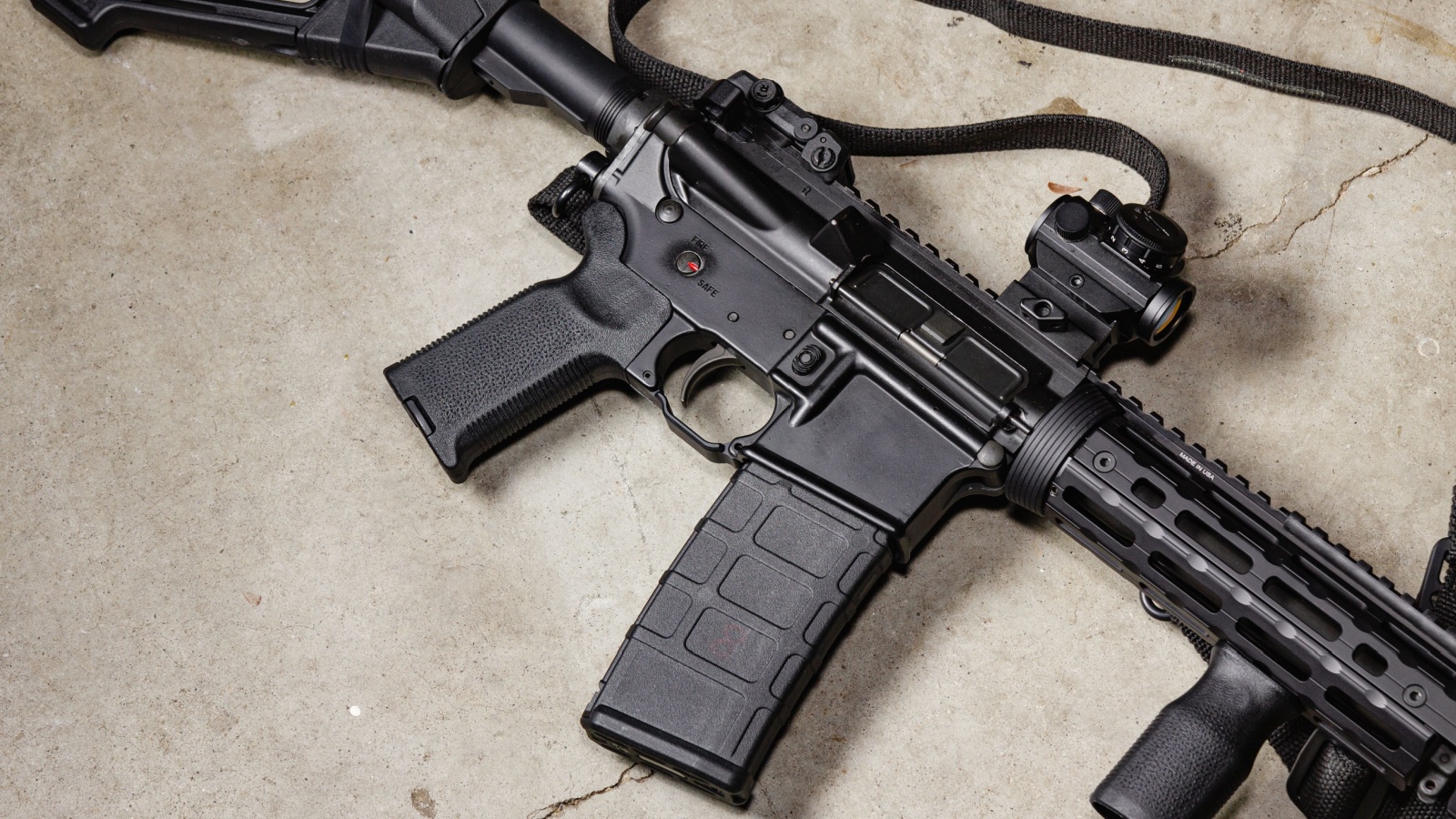
When soldiers clean their firearms, they perform a “field strip.” This involves disassembling the weapon into its major parts for routine maintenance. Such practices are crucial to ensure reliability in diverse environments, from arid deserts to humid jungles.
Angels
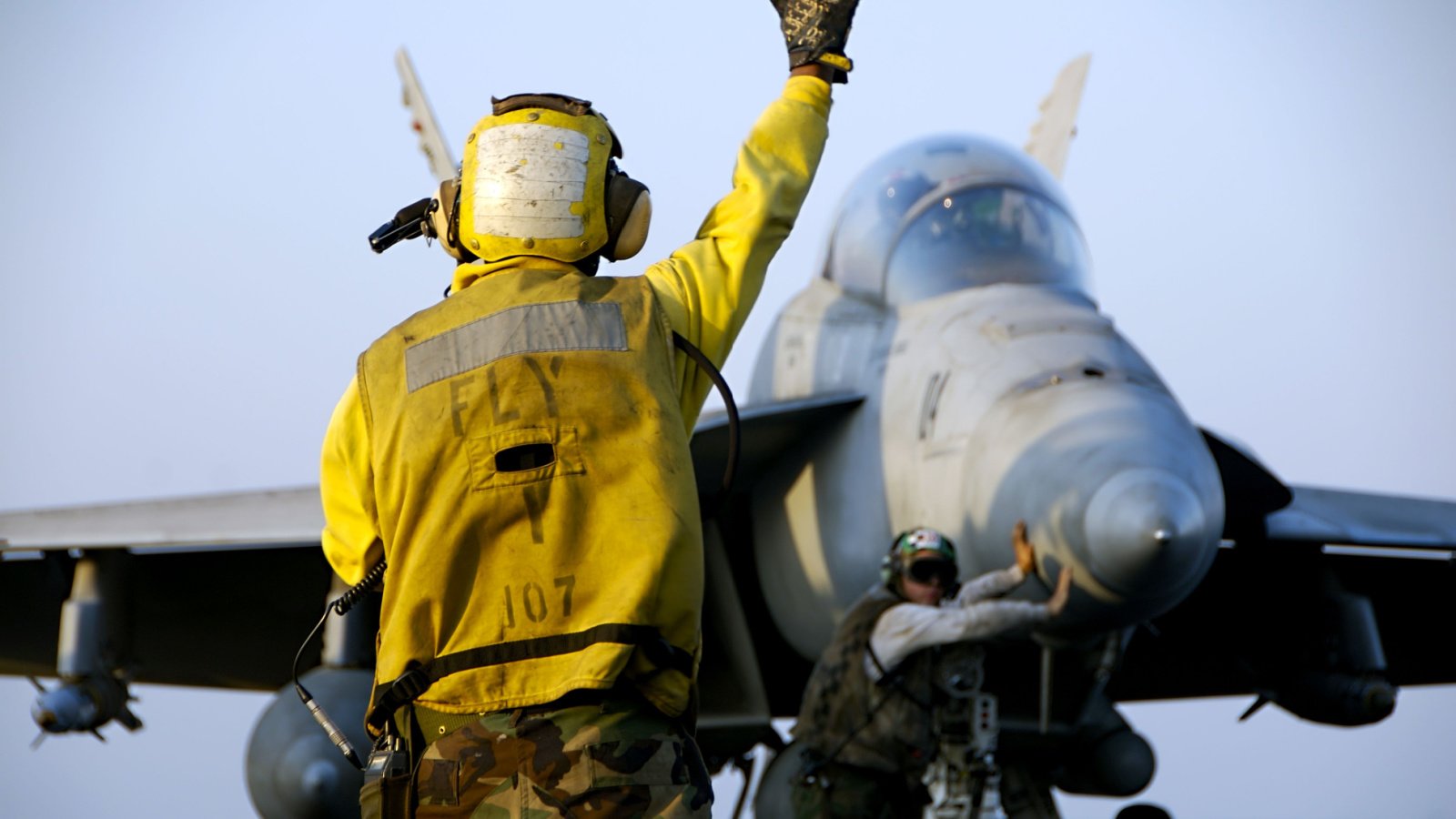
In aviation, “angels” refers to an altitude of thousands of feet. “Angels five” means flying at 5,000 feet. Pilots must report their “angels” for safety, coordination, and tactical reasons during flight operations.
FUBAR

An acronym for “Fouled Up Beyond All Recognition,” FUBAR describes a situation that has gone wrong. It is used humorously or ironically within the military to comment on operational mishaps or planning failures. This term gained popularity during World War II among American soldiers.
Zero Dark Thirty

This term refers to an unspecified time in the early hours before dawn when it is still dark. It’s used to denote the start time for missions that require cover of darkness. The phrase became recognized after the titular film about the hunt for Osama bin Laden.
Bravo Zulu
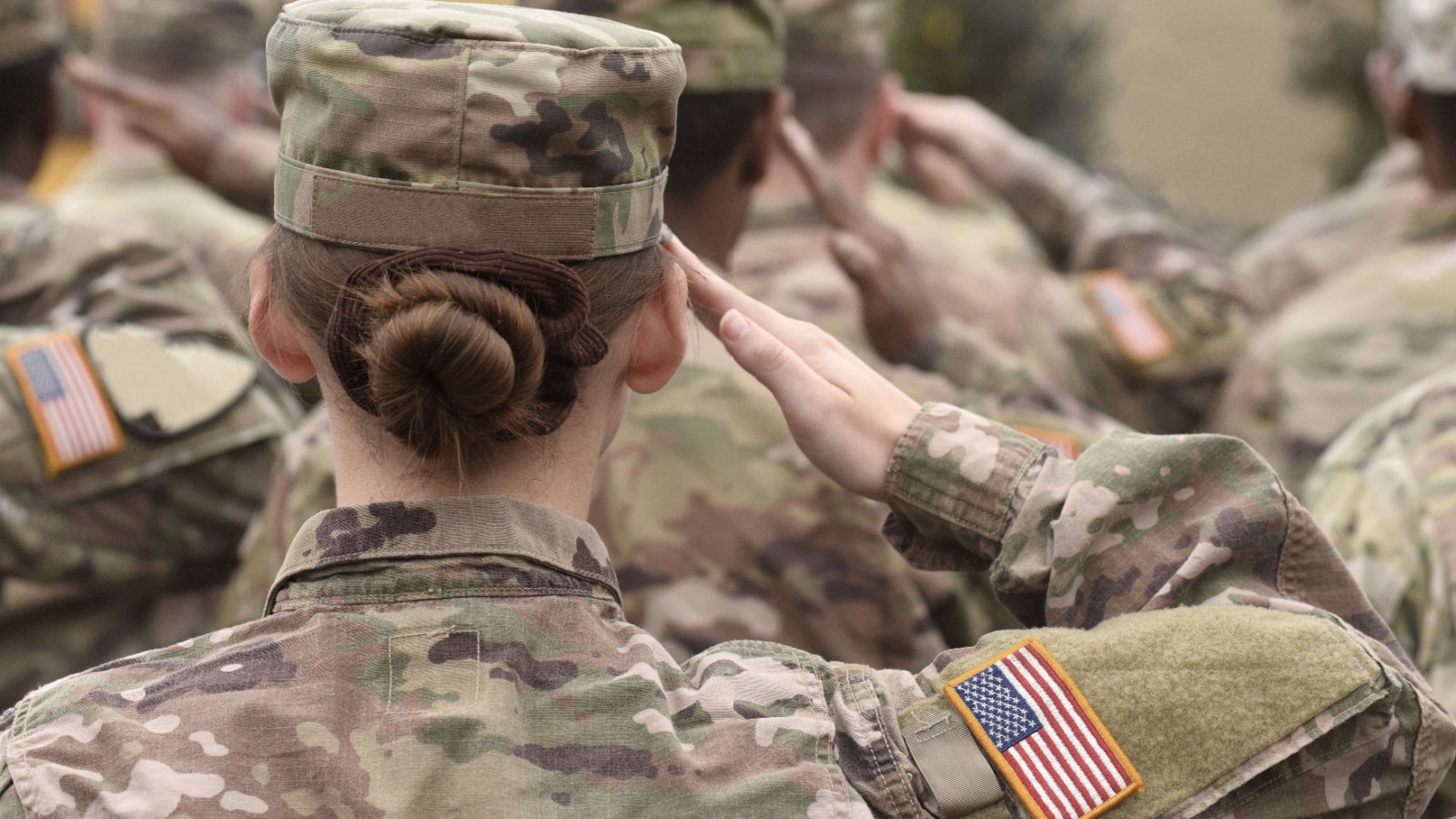
Originally from naval code, “Bravo Zulu” is a signal meaning “well done.” It’s used across various branches of the military to praise individuals or units for outstanding performance. This term has its roots in the NATO phonetic alphabet, where “B” and “Z” stand for “Bravo” and “Zulu,” respectively.
Five by Five
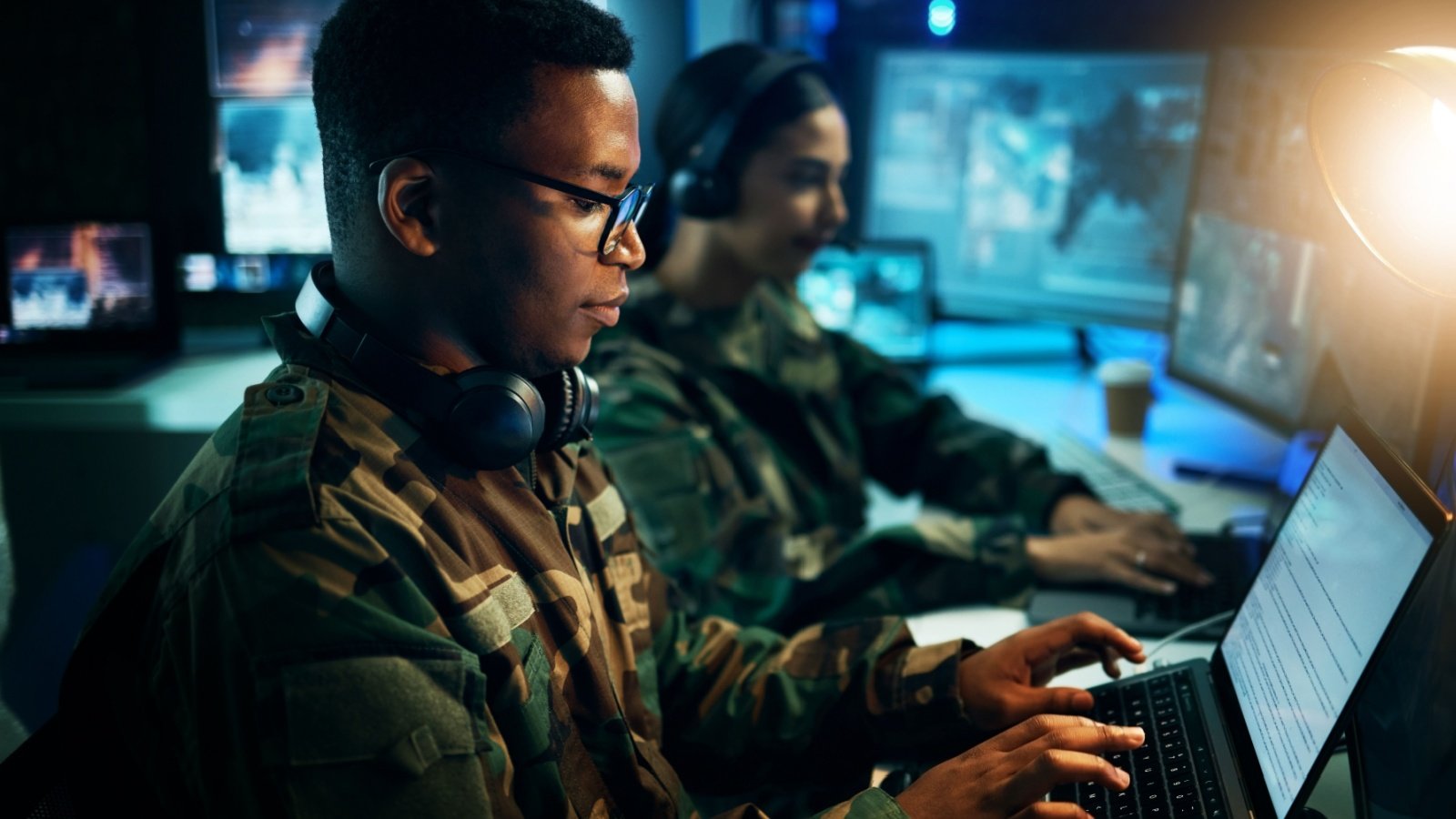
“Five by Five” signifies optimal clarity and signal strength in radio communications. It indicates that the message is loud and clear, ranking five on a scale of one to five for both volume and clarity. The term is often used to confirm understanding between units during operations.
Pogey Bait

Slang for candy or sweets, “Pogey Bait” is often used by infantry to refer to any non-essential luxury food items brought along in the field. The term originated in World War I and is still used to lighten the mood or as a bartering tool among troops.
Ruck Up
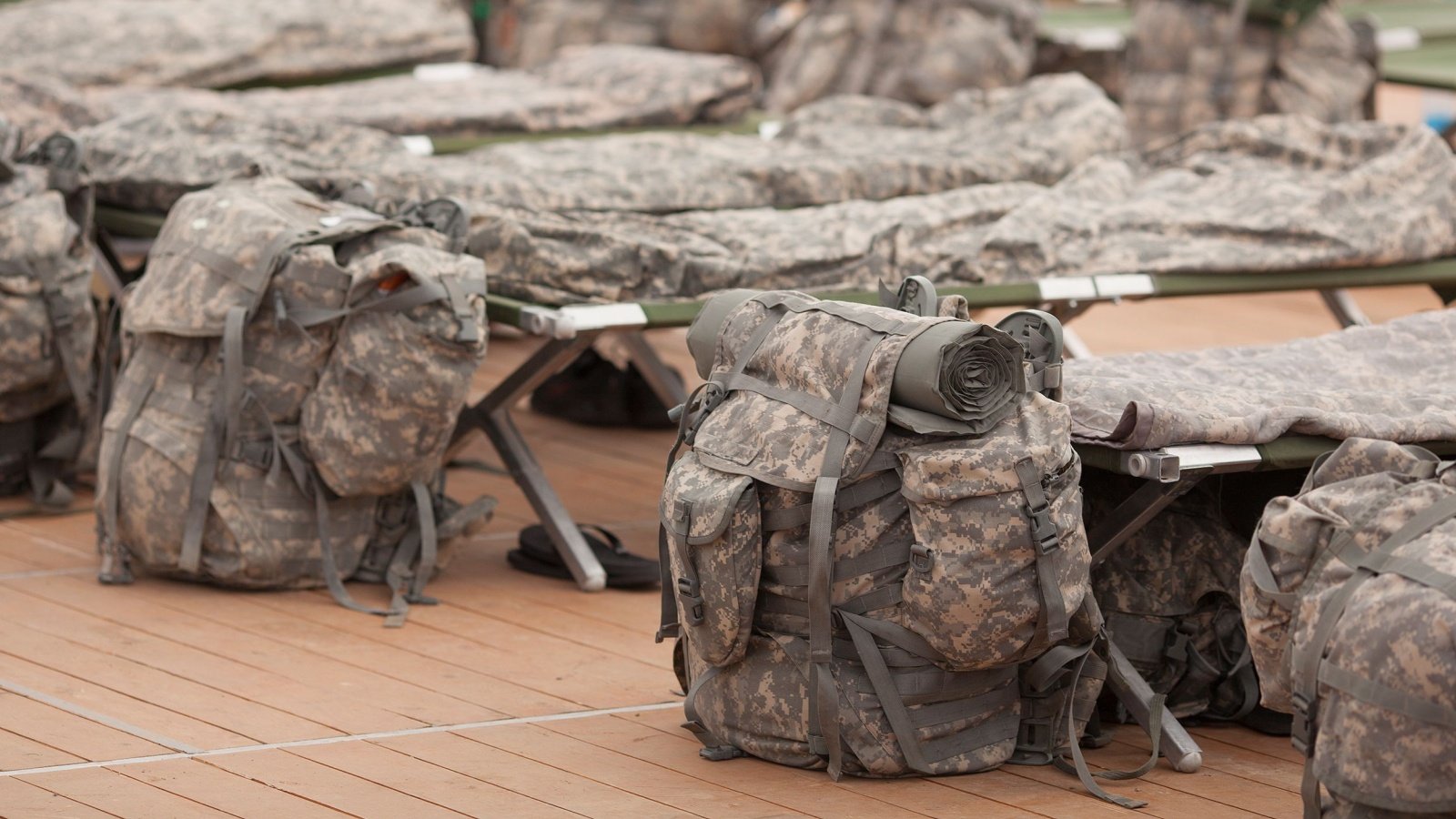
To “ruck up” means to put on your rucksack and prepare to move out. This command is synonymous with resilience and readiness, key traits in military life. The rucksack, often weighing over 50 pounds, carries essentials for survival and operation.
Oscar Mike

“Oscar Mike” means “on the move” in military lingo, originating from the NATO phonetic alphabet. It’s commonly used to indicate that a unit or individual is moving from one position to another. The term emphasizes mobility and readiness, critical in combat situations.
Scuttlebutt

“Scuttlebutt” originally referred to a cask on ships that held drinking water; now it means rumors or gossip. Sailors would gather around the scuttlebutt for a drink and exchange stories, much like modern water cooler talk.
Dust Off

Used primarily in medical evacuation scenarios, “dust off” refers to the urgent lifting of troops, especially for medical reasons. The term comes from the helicopter rotor wash that stirs up dust during takeoff and landing.
Echelon
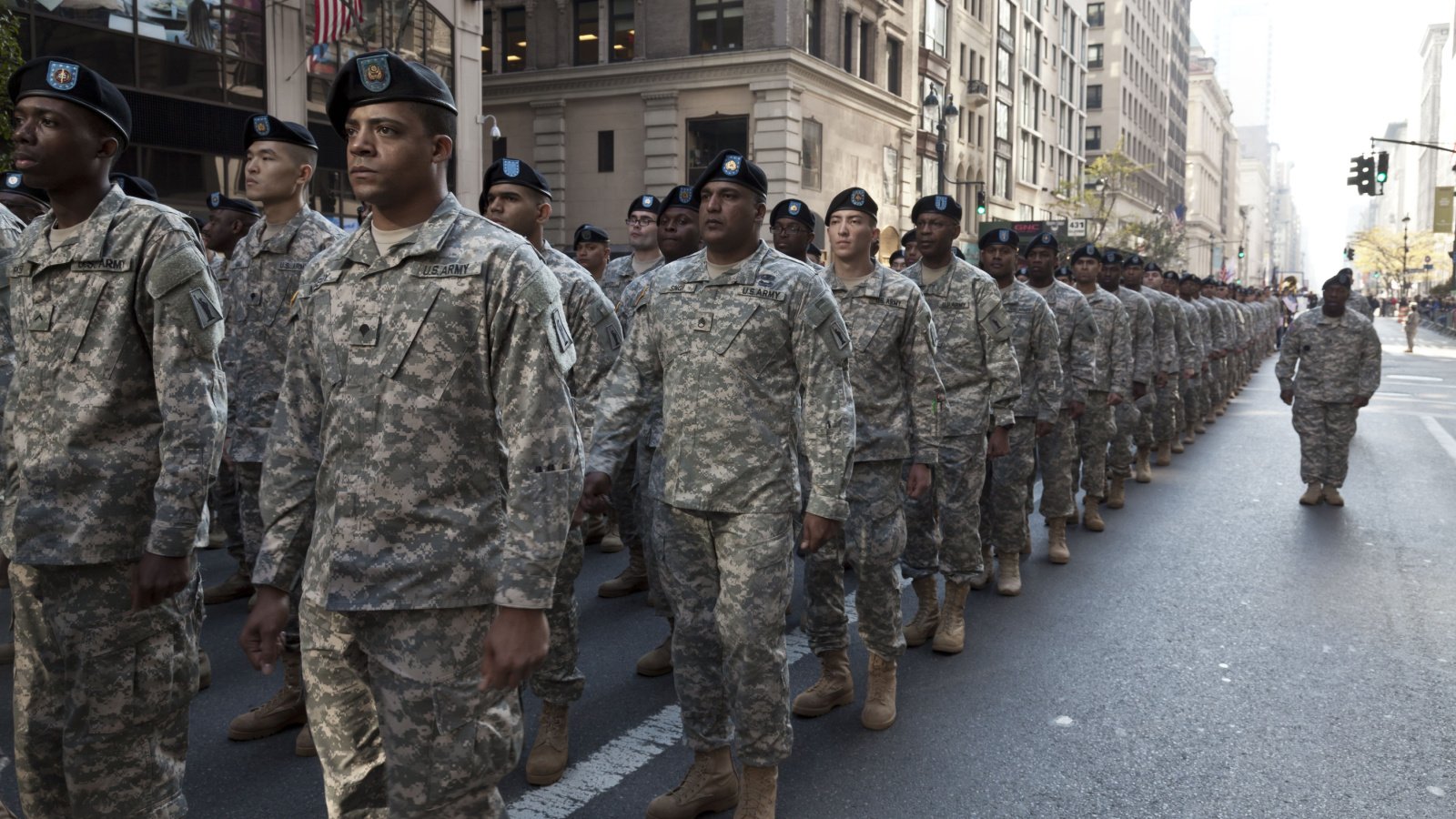
An “echelon” formation is a stepped, staggered, or diagonal line used for advancing troops or vehicles. It is designed to maximize firepower and observation capabilities while minimizing vulnerabilities. The term has historical roots dating back to Napoleonic warfare.
Fire for Effect
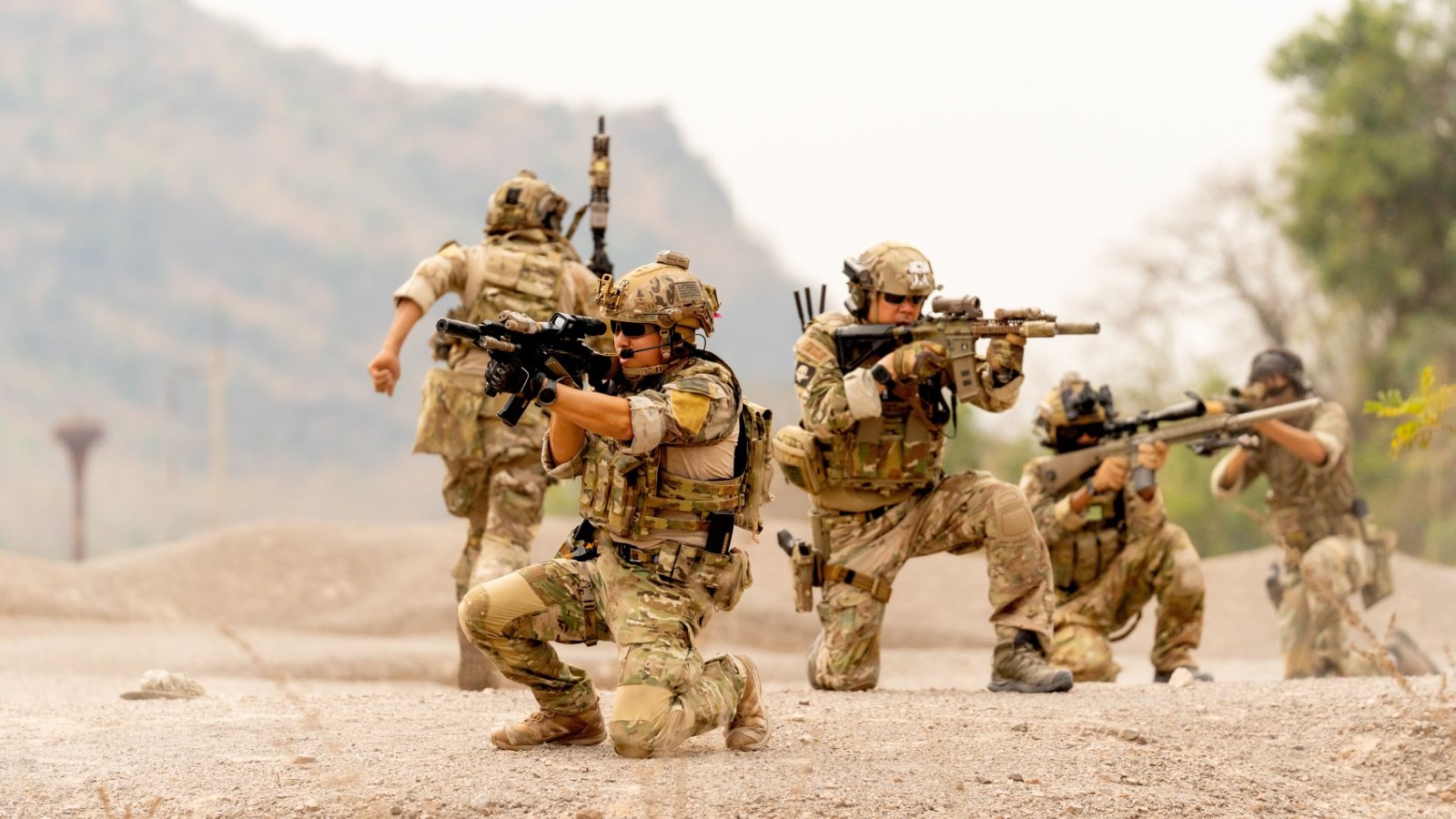
This command is given to artillery units to execute a planned barrage after observing the impacts of initial rounds. It signifies that the preceding spotting shots were accurate, and a full-scale attack is now justified. The effectiveness of this command relies on precise communication and coordination.
G.I.
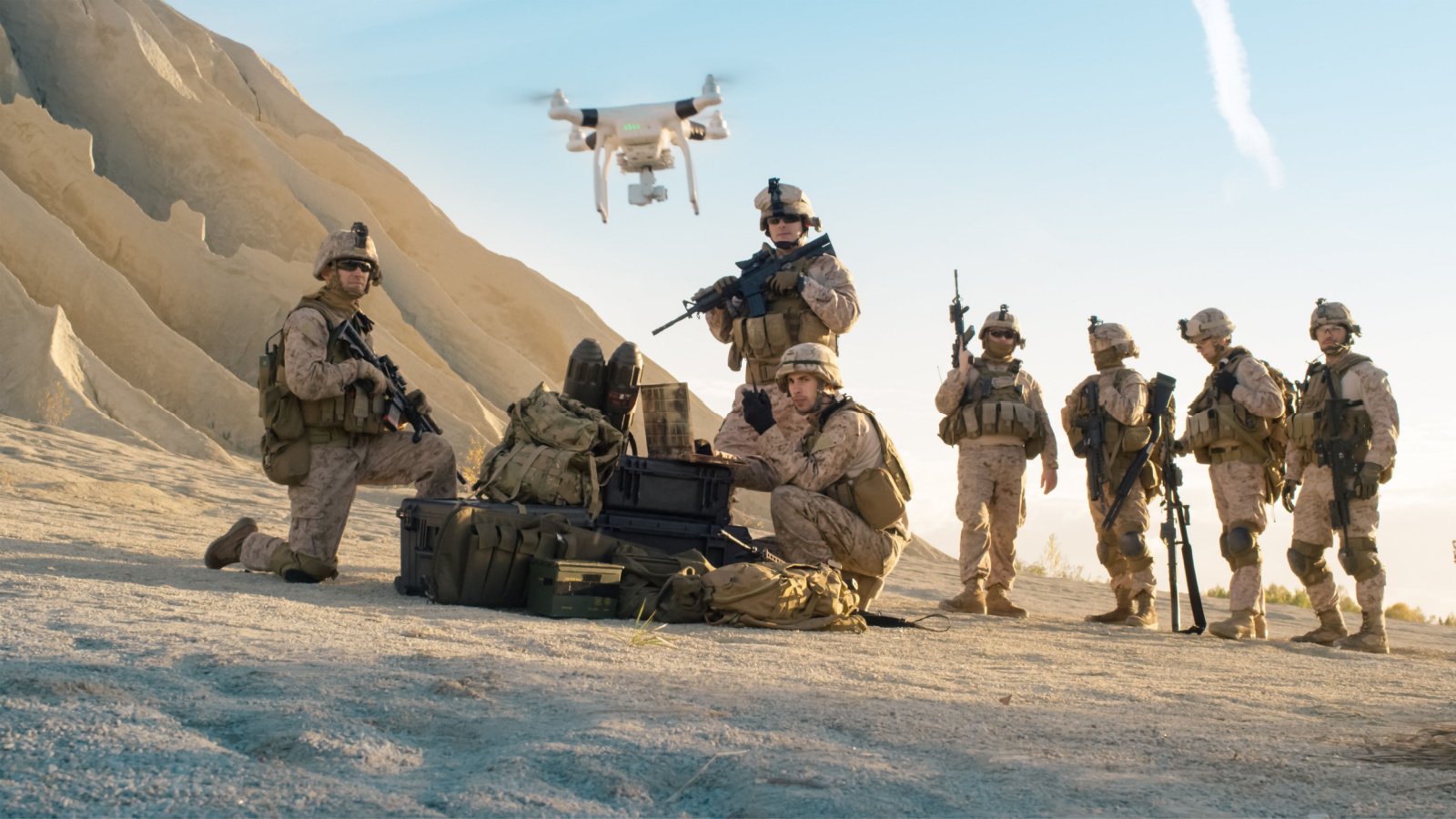
An abbreviation for “Government Issue,” G.I. refers to standard-issue equipment supplied to soldiers. Over time, it has also come to represent the soldiers themselves. The term encapsulates the uniformity and standardization foundational to military logistics and personnel management.
Hard Target

A “hard target” refers to an object or installation that is heavily fortified and difficult to attack or destroy. Identifying and engaging hard targets requires sophisticated tactics and weaponry.
Jump Master
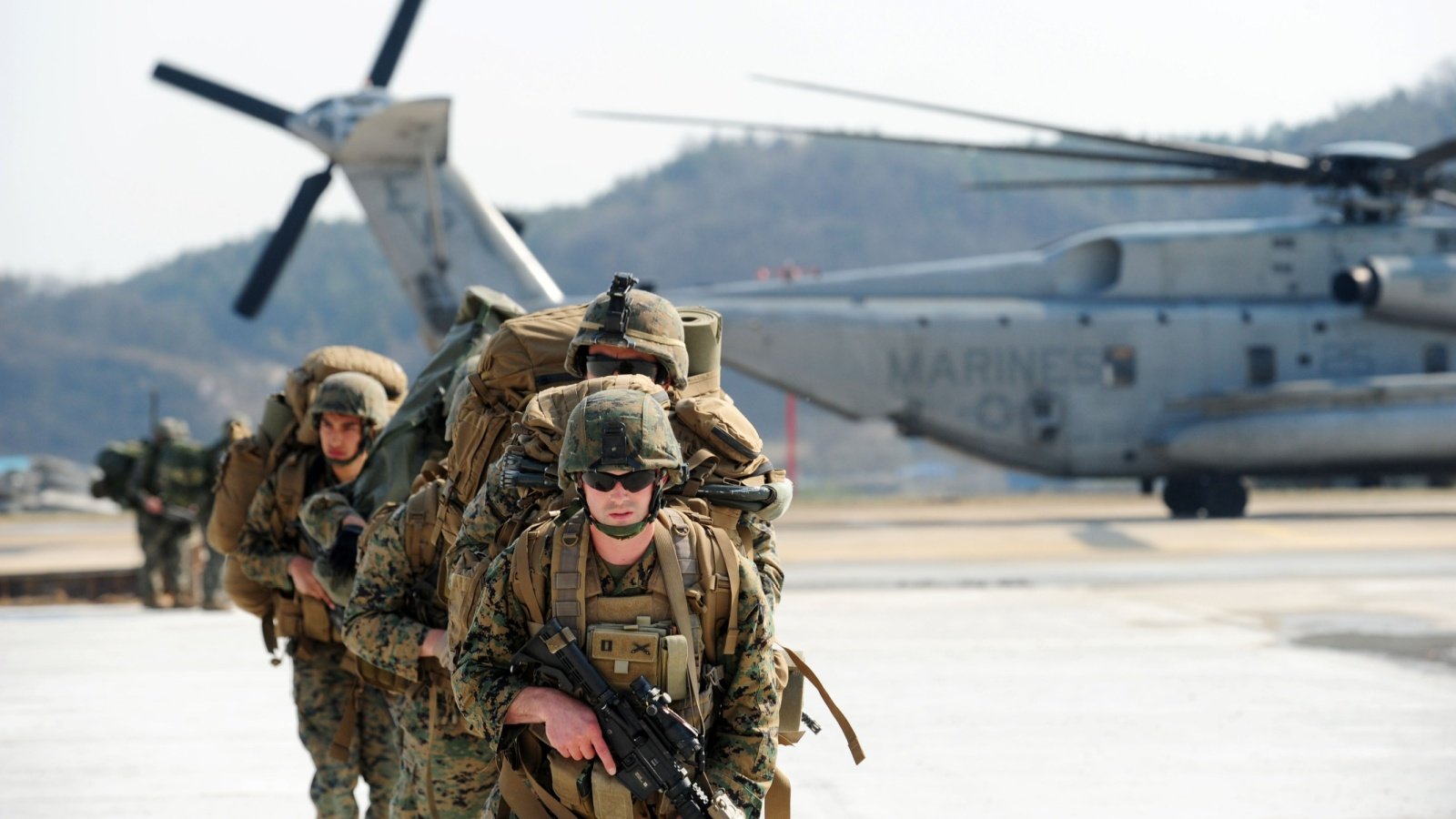
A “Jump Master” is a qualified specialist who oversees airborne operations from a military aircraft. They are responsible for the safety and precision of paratroopers’ jumps during training and operational drops. Their role is vital for successful air insertion missions.
Kill Chain
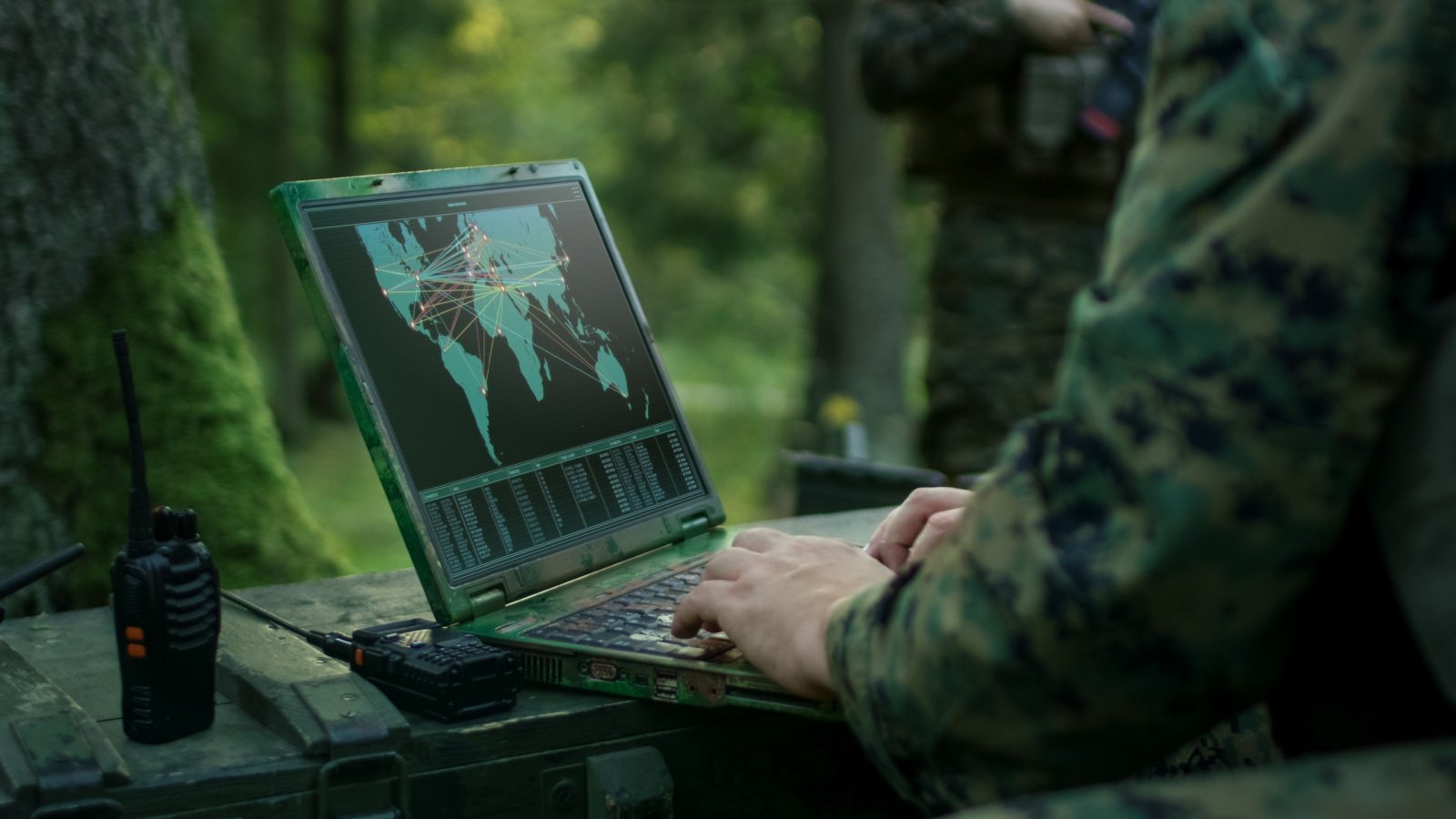
The “kill chain” describes the process of target identification, force dispatch, and destruction. This systematic approach is employed to streamline operations and increase the likelihood of mission success.
Lima Charlie

“Lima Charlie” stands for “Loud and Clear” in the phonetic alphabet, affirming clear communication. It is essential for effective operations, as miscommunication can lead to operational failures or casualties. The phrase is a staple in verbal confirmations during missions.
Mustang

A “Mustang” is an officer who has risen from the ranks of enlisted personnel. This term is a nod to their grit and determination, much like the wild mustangs of the American West. Mustangs are respected for their experience and perspective.
No-go Area

A “no-go area” is strictly off-limits to unauthorized personnel due to hazards or security protocols. These areas are often marked in conflict zones or around sensitive installations. The designation of no-go areas is crucial for maintaining operational security and safety.
Quarters
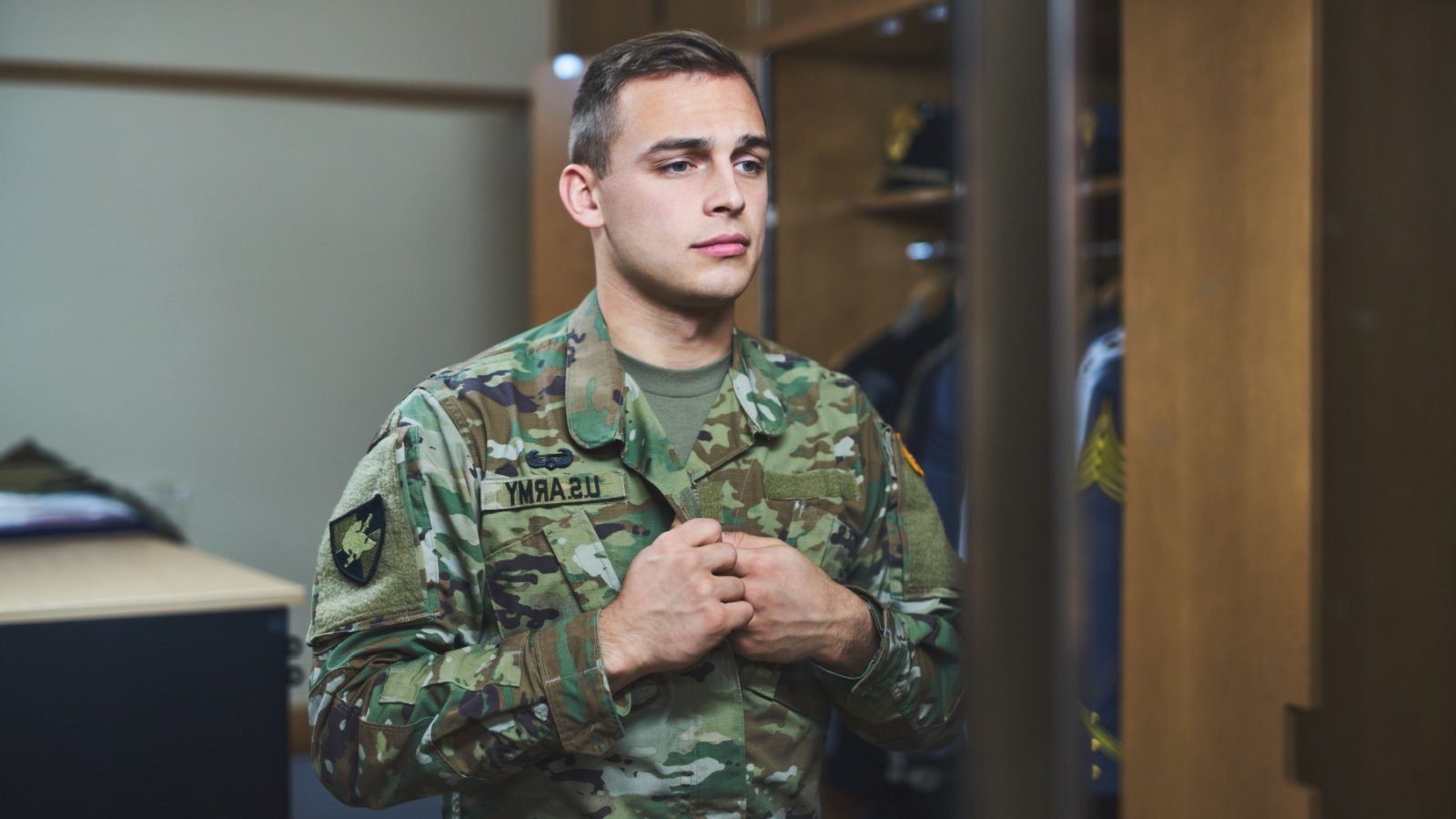
“Quarters” refers to living accommodations provided to military personnel. These can range from barracks for enlisted troops to private quarters for officers. The quality and type of quarters can significantly affect morale and operational effectiveness.





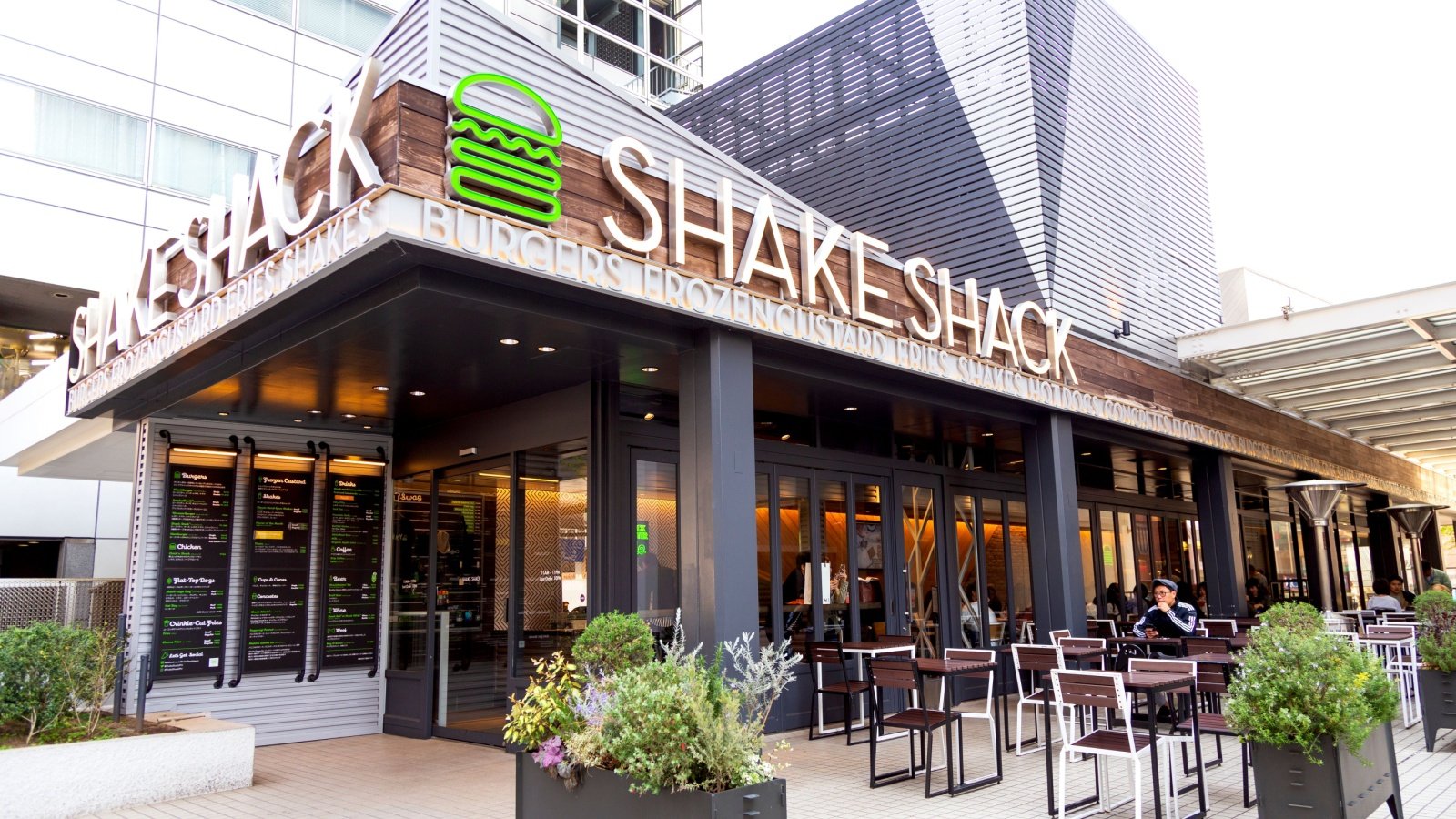



https://semaglupharm.com/# Order Rybelsus discreetly
Predni Pharm: PredniPharm – PredniPharm
http://prednipharm.com/# prednisone canada pharmacy
Generic Crestor for high cholesterol Generic Crestor for high cholesterol side effects of crestor rosuvastatin 20 mg
buy atorvastatin online: Lipi Pharm – Atorvastatin online pharmacy
PredniPharm: prednisone – prednisone 50
PredniPharm prednisone purchase canada prednisone 5 tablets
5 mg prednisone daily: buy prednisone online without a prescription – 54 prednisone
https://semaglupharm.com/# is compounded semaglutide going away
Crestor Pharm: Safe online pharmacy for Crestor – rosuvastatin coupon
https://semaglupharm.shop/# SemagluPharm
Lipi Pharm: Atorvastatin online pharmacy – Lipi Pharm
alcohol crestor Crestor Pharm CrestorPharm
https://semaglupharm.com/# Semaglu Pharm
PredniPharm: prednisone 40 mg tablet – buy prednisone 10mg
Lipi Pharm: atorvastatin package insert – LipiPharm
https://semaglupharm.com/# SemagluPharm
generic over the counter prednisone average cost of prednisone 20 mg PredniPharm
Crestor home delivery USA: rosuvastatin 20 mg images – when should i take rosuvastatin 5 mg
https://semaglupharm.com/# Semaglu Pharm
http://prednipharm.com/# Predni Pharm
stopping semaglutide: side effects of too much semaglutide – Order Rybelsus discreetly
Generic Lipitor fast delivery: FDA-approved generic statins online – Lipi Pharm
http://semaglupharm.com/# Semaglu Pharm
semaglutide before and after 1 month: SemagluPharm – SemagluPharm
LipiPharm LipiPharm Lipi Pharm
LipiPharm: LipiPharm – Lipi Pharm
https://semaglupharm.com/# ro semaglutide
buy semaglutide peptides: SemagluPharm – rybelsus cancer risk
rybelsus 3mg weight loss reviews Semaglu Pharm SemagluPharm
http://semaglupharm.com/# Semaglutide tablets without prescription
Online statin therapy without RX: Crestor Pharm – Crestor Pharm
https://semaglupharm.shop/# how long has rybelsus been on the market
Rybelsus side effects and dosage: Order Rybelsus discreetly – SemagluPharm
CrestorPharm CrestorPharm CrestorPharm
https://semaglupharm.com/# SemagluPharm
prednisone 5 50mg tablet price: can you buy prednisone over the counter uk – PredniPharm
prednisone price: buy prednisone without rx – 54 prednisone
Crestor Pharm ezetimibe and crestor No doctor visit required statins
http://prednipharm.com/# buy prednisone without prescription paypal
http://semaglupharm.com/# semaglutide 6 week belly ozempic weight loss before and after
Crestor Pharm: Crestor Pharm – Buy statins online discreet shipping
where to inject semaglutide: Rybelsus online pharmacy reviews – SemagluPharm
over the counter prednisone cream buy prednisone with paypal canada Predni Pharm
https://semaglupharm.com/# Affordable Rybelsus price
rosuvastatin methyl ester market: CrestorPharm – rosuvastatin 20 mg para que sirve
LipiPharm: USA-based pharmacy Lipitor delivery – Lipi Pharm
prednisone pack Predni Pharm prednisone for dogs
https://semaglupharm.com/# Rybelsus for blood sugar control
https://lipipharm.com/# LipiPharm
crestor side effect: CrestorPharm – Crestor Pharm
Affordable Lipitor alternatives USA Online statin drugs no doctor visit No RX Lipitor online
https://semaglupharm.shop/# Semaglu Pharm
reputable mexican pharmacies online: medication from mexico pharmacy – medication from mexico pharmacy
mexico drug stores pharmacies: Meds From Mexico – Meds From Mexico
https://indiapharmglobal.shop/# legitimate online pharmacies india
п»їbest mexican online pharmacies pharmacies in mexico that ship to usa mexican rx online
https://medsfrommexico.com/# Meds From Mexico
trustworthy canadian pharmacy: canadian compounding pharmacy – safe canadian pharmacies
India Pharm Global: India Pharm Global – indian pharmacy
https://indiapharmglobal.com/# Online medicine home delivery
reputable indian pharmacies India Pharm Global pharmacy website india
India Pharm Global: India Pharm Global – online pharmacy india
online shopping pharmacy india: India Pharm Global – India Pharm Global
https://indiapharmglobal.shop/# India Pharm Global
India Pharm Global India Pharm Global buy prescription drugs from india
http://indiapharmglobal.com/# reputable indian online pharmacy
Meds From Mexico: mexico drug stores pharmacies – mexican rx online
https://indiapharmglobal.com/# india pharmacy
pharmacies in mexico that ship to usa: Meds From Mexico – Meds From Mexico
buy prescription drugs from india top online pharmacy india indian pharmacy
Meds From Mexico: Meds From Mexico – best online pharmacies in mexico
https://medsfrommexico.com/# reputable mexican pharmacies online
best india pharmacy: cheapest online pharmacy india – India Pharm Global
http://canadapharmglobal.com/# reliable canadian pharmacy
India Pharm Global India Pharm Global indian pharmacy
https://indiapharmglobal.shop/# online shopping pharmacy india
canadian pharmacies: Canada Pharm Global – pet meds without vet prescription canada
canadian pharmacy drugs online: Canada Pharm Global – online canadian drugstore
Meds From Mexico mexican mail order pharmacies Meds From Mexico
http://indiapharmglobal.com/# India Pharm Global
Meds From Mexico: Meds From Mexico – Meds From Mexico
mexican mail order pharmacies: п»їbest mexican online pharmacies – medicine in mexico pharmacies
http://canadapharmglobal.com/# canadian pharmacy ed medications
Meds From Mexico buying from online mexican pharmacy Meds From Mexico
http://medsfrommexico.com/# Meds From Mexico
mexican online pharmacies prescription drugs: mexican rx online – Meds From Mexico
Meds From Mexico: buying from online mexican pharmacy – mexico drug stores pharmacies
https://indiapharmglobal.com/# India Pharm Global
pharmacy canadian superstore canada drugstore pharmacy rx canadianpharmacymeds com
п»їbest mexican online pharmacies: mexico drug stores pharmacies – Meds From Mexico
EFarmaciaIt: EFarmaciaIt – EFarmaciaIt
comprar viagra seguro Papa Farma Papa Farma
https://raskapotek.shop/# urinprøve narkotika apotek
http://efarmaciait.com/# EFarmaciaIt
Papa Farma: Papa Farma – paracetamol spanien
http://raskapotek.com/# neglelim apotek
apotek stan: Svenska Pharma – covid utslag barn
Rask Apotek Rask Apotek fullmaktskjema apotek
farmacia.it recensioni: EFarmaciaIt – beta 21 crema a cosa serve
http://papafarma.com/# farmacia directo
https://papafarma.com/# Papa Farma
rosemary oil apotek: reisevaksine apotek – linser pГҐ apotek
Papa Farma braun serie 6 opiniones farmacia abierta zaragoza
Svenska Pharma: jour apotek – Svenska Pharma
https://raskapotek.shop/# probiotika hund apotek
EFarmaciaIt augmentin serve ricetta fucicort crema recensioni
Rask Apotek: blodtrykksmГҐling apotek – morsmelkerstatning apotek
http://efarmaciait.com/# esteclin compresse
EFarmaciaIt: EFarmaciaIt – EFarmaciaIt
http://svenskapharma.com/# Svenska Pharma
5% di 800 EFarmaciaIt qual ГЁ la farmacia online piГ№ affidabile?
farmacia abierta ahora: eucerin de donde es – mg precio espaГ±a
https://raskapotek.com/# apotek jod tabletter
Papa Farma: farmacia abierta cerca de mi ubicaciГіn actual – mejor mГ©dico digestivo palma de mallorca
glicerolo zeta come si usa: magnesio supremo e eutirox – EFarmaciaIt
Svenska Pharma utslag bilder akne medicin receptfritt
https://papafarma.com/# farmacias compra online
https://efarmaciait.shop/# farmacisti on line
doptest apotek: body hund apotek – cpap maske apotek
alla farmacia: ready gel bambini – EFarmaciaIt
cuanto tarda en hacer efecto el movicol Papa Farma Papa Farma
https://raskapotek.com/# Rask Apotek
Papa Farma: Papa Farma – Papa Farma
isopropanol apotek: brodder apotek – aporek
Svenska Pharma Svenska Pharma Svenska Pharma
http://raskapotek.com/# hostesaft apotek
https://papafarma.com/# farmacia que es
apotek rikshospitalet ГҐpningstider: munnskyll apotek – Rask Apotek
http://efarmaciait.com/# chat klarna
crema diprogenta para que sirve: farmacia dolores – Papa Farma
EFarmaciaIt bentelan bambini forum zeaforce a cosa serve
EFarmaciaIt: EFarmaciaIt – EFarmaciaIt
https://raskapotek.shop/# Rask Apotek
expose 100 mg a cosa serve EFarmaciaIt samyr 400 italia
comprar medicamentos online con receta: Papa Farma – mounjaro comprar online
http://raskapotek.com/# apotek covid test
http://raskapotek.com/# allergivennlig mascara apotek
Papa Farma: Papa Farma – farmacia garrido
Papa Farma farmacias abiertas madrid Papa Farma
farmasi online: Papa Farma – Papa Farma
https://svenskapharma.com/# Svenska Pharma
Rask Apotek: digitalt fГёrerkort apotek – pipetter apotek
champГє klorane opiniones comprar stromectol Papa Farma
https://papafarma.shop/# epiduo gel opiniones
http://papafarma.com/# Papa Farma
Rask Apotek: Rask Apotek – glidelaken apotek
shop aphoteke Pharma Jetzt Pharma Jetzt
http://pharmajetzt.com/# apotal online apotheke
pharmacie grand hommes: vГ©tГ©rinaire lourdes – pharmacie en ligne viagra
MedicijnPunt: medicijnen op recept online bestellen – apotgeek
Pharma Connect USA PharmaConnectUSA PharmaConnectUSA
https://pharmaconfiance.shop/# Pharma Confiance
http://pharmaconfiance.com/# Pharma Confiance
Pharma Confiance: pharmacy 24h – dafalgan mal de gorge
online pharmacy uk no prescription viagra: india online pharmacy – online pharmacy uk no prescription viagra
https://pharmaconnectusa.shop/# Pharma Connect USA
Pharma Connect USA Pharma Connect USA buy lortab online pharmacy
Pharma Confiance: tapis absorbant pour chien – Pharma Confiance
Pharma Confiance: pharmasie – pharmacie homГ©opathie paris 16
https://pharmaconfiance.com/# Pharma Confiance
https://pharmajetzt.shop/# tebonin 240 120 stück preisvergleich
Pharma Confiance Pharma Confiance Pharma Confiance
online apotheek goedkoper: MedicijnPunt – landelijke apotheek
http://pharmaconnectusa.com/# how much does percocet cost at the pharmacy
medikamente auf rechnung: PharmaJetzt – PharmaJetzt
ggp montpellier quel est le prix d’une boГ®te de viagra en pharmacie Pharma Confiance
Pharma Confiance: est-ce que doxycycline fait grossir – Pharma Confiance
http://medicijnpunt.com/# Medicijn Punt
http://pharmajetzt.com/# PharmaJetzt
apotal online apotheke: online apotheke ohne anmeldung – PharmaJetzt
Pharma Jetzt germany apotheke Pharma Jetzt
pharmacy online reviews: ramipril online pharmacy – cymbalta pharmacy assistance
https://pharmajetzt.shop/# medikamente sofort liefern
clinique vГ©tГ©rinaire la ligne bleue: tadalafil 10mg acheter – mon compte newpharma
onlineapotheke PharmaJetzt Pharma Jetzt
PharmaConnectUSA: PharmaConnectUSA – PharmaConnectUSA
http://pharmaconfiance.com/# Pharma Confiance
http://pharmaconnectusa.com/# buy propecia online pharmacy
medikamente bestellen ohne rezept: Pharma Jetzt – apotheken online bestellen
Pharma Connect USA unicare pharmacy vardenafil Pharma Connect USA
http://pharmaconnectusa.com/# PharmaConnectUSA
MedicijnPunt: Medicijn Punt – Medicijn Punt
Pharma Jetzt: apotheek online – apotheke per rechnung
Motilium Pharma Connect USA target pharmacy lexapro price
http://pharmajetzt.com/# PharmaJetzt
Pharma Connect USA: Pharma Connect USA – Pharma Connect USA
apotheke venlo: internetapotheken – PharmaJetzt
http://medicijnpunt.com/# med apotheek
https://pharmaconnectusa.com/# Pharma Connect USA
medizin bestellen Pharma Jetzt Pharma Jetzt
Pharma Confiance: comment bien utiliser le sildГ©nafil – comment prendre paracetamol
PharmaJetzt: PharmaJetzt – PharmaJetzt
http://pharmaconnectusa.com/# PharmaConnectUSA
Pharma Confiance sildГ©nafil 100 pharmacie apotheek
Pharma Confiance: la crГЁme de paris notre-dame – monuril ordonnance ou pas
https://pharmajetzt.com/# Pharma Jetzt
quel pharmacie: constipation chat insuffisance rГ©nale – bioderma siege social
http://pharmajetzt.com/# PharmaJetzt
online pharmacy no prescription viagra: PharmaConnectUSA – viagra pharmacy thailand
Pharma Confiance prix monuril Pharma Confiance
http://pharmajetzt.com/# apotheke obline
Pharma Confiance: Pharma Confiance – Pharma Confiance
Pharma Confiance: pharmashopi mon compte – Pharma Confiance
pharmseo24.com generic pharmacy online publix pharmacy bactrim
https://medicijnpunt.com/# apotheker medicatie
Pharma Jetzt: shop apotheke deutschland – PharmaJetzt
medikamente online: Pharma Jetzt – PharmaJetzt
Pharma Jetzt medikamente online bestellen Pharma Jetzt
https://pharmajetzt.shop/# online versandapotheke
https://pharmajetzt.com/# apotheke online shop
commander sildenafil: ddd vite fait – acheter ketoderm crГЁme en ligne
gode 24 cm: pharmacie de garde dans le cher – Pharma Confiance
http://medicijnpunt.com/# Medicijn Punt
Medicijn Punt: Medicijn Punt – online medicijnen bestellen apotheek
Pharma Confiance: pharmacien officine – commande de viagra
http://pharmajetzt.com/# schopapoteke
https://pharmaconnectusa.com/# gabapentin pharmacy prices
mediherz versandapotheke online shop bestellen: Pharma Jetzt – Pharma Jetzt
apotheken: pharmacy online netherlands – Medicijn Punt
https://pharmaconnectusa.com/# best online pharmacy without prescriptions
Pharma Confiance: pharmacie ouverte aujourd’hui strasbourg – prescription en ligne
acheter les 38 fleurs de bach: Pharma Confiance – Pharma Confiance
https://pharmajetzt.com/# günstige apotheken
https://pharmaconfiance.shop/# vГ©tГ©rinaire lourdes centre ville
pharmacie paris 12: Pharma Confiance – Pharma Confiance
http://pharmaconfiance.com/# Pharma Confiance
pharmacie en ligne sans ordonnance belgique: Pharma Confiance – Pharma Confiance
snel medicijnen bestellen: farmacie online – medicine online
https://pharmajetzt.com/# apotheke im internet
onlien apotheke: Pharma Jetzt – shop apothrke
https://pharmajetzt.com/# deutsche apotheke
apotheke holland: online apotheek recept – MedicijnPunt
https://medicijnpunt.shop/# MedicijnPunt
Pharma Connect USA: PharmaConnectUSA – methadone online pharmacy
Pharma Confiance: Pharma Confiance – god ceinture sans ceinture
http://pharmajetzt.com/# online-apotheke top 10
PharmaConnectUSA: mexican pharmacy lexapro – Pharma Connect USA
rx pharmacy online: envision rx specialty pharmacy – percocet internet pharmacy
https://pharmaconnectusa.shop/# 24 7 pharmacy online
https://medicijnpunt.shop/# Medicijn Punt
PharmaJetzt: PharmaJetzt – gГјnstig medikamente
apotheek zonder recept: medicijnen bestellen apotheek – MedicijnPunt
Pharma Connect USA: Pharma Connect USA – Pharma Connect USA
https://pharmaconfiance.com/# pharmacie vente en ligne
PharmaJetzt: PharmaJetzt – Pharma Jetzt
https://pharmajetzt.shop/# Pharma Jetzt
apotheek nl online: MedicijnPunt – pseudoephedrine kopen in nederland
Pharma Connect USA: online medicine tablets shopping – Pharma Connect USA
http://medicijnpunt.com/# medicijnen kopen
PharmaConnectUSA: PharmaConnectUSA – australia online pharmacy
internetapotheek nederland Medicijn Punt pharma online
Medicijn Punt: apteka amsterdam – Medicijn Punt
https://pharmajetzt.com/# Pharma Jetzt
Pharma Confiance: pharmacie ligne – pharmacue
https://pharmaconfiance.com/# pharmacie 8h
PharmaConnectUSA: accurate rx pharmacy – drug store news
Pharma Connect USA viagra pharmacy uk percocet pharmacy price
ketoconazole gel utilisation: pharmacie de garde lille aujourd’hui – god prix
https://pharmaconfiance.com/# fucidine pommade prix
best online pharmacy generic cialis: real cialis online pharmacy – best online pharmacies no prescription
MedicijnPunt: mijn apotheek – Medicijn Punt
online pharmacy no prescription zithromax: vancouver pharmacy viagra – android app store pharmacy
https://pharmaconnectusa.shop/# PharmaConnectUSA
Pharma Connect USA PharmaConnectUSA PharmaConnectUSA
http://pharmaconfiance.com/# pharmaciens
Pharma Connect USA: Pharma Connect USA – jcm pharmacy tadacip
dГ©tox intestin ventre plat: autotest covid parapharmacie – Pharma Confiance
http://pharmaconfiance.com/# Pharma Confiance
orlistat achat en ligne: Pharma Confiance – phamracie
Pharma Confiance Pharma Confiance eau de lourdes prix
Pharma Jetzt: appotheke online – gГјnstige online apotheke
https://medicijnpunt.com/# medicijne
Medicijn Punt: Medicijn Punt – Medicijn Punt
Pharma Confiance: ml kids nice – gel god to be
https://pharmaconnectusa.shop/# Pharma Connect USA
Pharma Jetzt Pharma Jetzt online apotheke schnelle lieferung
Pharma Confiance: ghd service client – Pharma Confiance
https://pharmaconfiance.shop/# Pharma Confiance
Pharma Jetzt: Pharma Jetzt – apotheke im internet
versand apotheke: shop apotheke medikamente – meine online apotheke
walgreen online pharmacy gabapentin amneal pharmacy PharmaConnectUSA
https://medicijnpunt.com/# MedicijnPunt
https://pharmaconnectusa.shop/# pharmacy to buy viagra
cachet bleu allergie: Pharma Confiance – prix tadalafil
PharmaConnectUSA: viagra indian pharmacy – online pharmacy reviews ambien
Pharma Connect USA purchase adipex from an online pharmacy viagra pharmacy prices uk
Pharma Jetzt: luitpold apotheke online-shop versandapotheke – PharmaJetzt
medikamente bestellen ohne rezept: seriГ¶se online-apotheke rezeptfrei – arzneimittel bestellen
https://pharmajetzt.com/# PharmaJetzt
online apotheke: recept medicijnen – online medicijnen kopen zonder recept
https://medicijnpunt.shop/# Medicijn Punt
MedicijnPunt: MedicijnPunt – viata online apotheek
best canadian online pharmacy CanRx Direct reliable canadian pharmacy
https://tijuanameds.shop/# reputable mexican pharmacies online
pharmacy website india: online pharmacy india – world pharmacy india
IndiMeds Direct: IndiMeds Direct – online pharmacy india
https://tijuanameds.com/# buying prescription drugs in mexico
TijuanaMeds reputable mexican pharmacies online TijuanaMeds
mexican pharmaceuticals online: TijuanaMeds – TijuanaMeds
https://indimedsdirect.shop/# Online medicine home delivery
canadian pharmacy online: recommended canadian pharmacies – canadian pharmacy meds
https://tijuanameds.com/# TijuanaMeds
canadadrugpharmacy com CanRx Direct canadian pharmacy ratings
legitimate canadian pharmacy: canadian pharmacy world – canadianpharmacymeds com
https://indimedsdirect.shop/# indian pharmacies safe
TijuanaMeds mexico pharmacies prescription drugs TijuanaMeds
canadian drugs: CanRx Direct – canadian pharmacy
https://tijuanameds.com/# reputable mexican pharmacies online
http://indimedsdirect.com/# IndiMeds Direct
purple pharmacy mexico price list: TijuanaMeds – TijuanaMeds
ed drugs online from canada CanRx Direct canada pharmacy online legit
https://indimedsdirect.shop/# IndiMeds Direct
IndiMeds Direct: IndiMeds Direct – IndiMeds Direct
canadian pharmacy no scripts CanRx Direct canada pharmacy online legit
http://canrxdirect.com/# best canadian pharmacy
http://tijuanameds.com/# buying prescription drugs in mexico online
legitimate canadian pharmacy online: reputable canadian online pharmacy – canadadrugpharmacy com
IndiMeds Direct IndiMeds Direct IndiMeds Direct
TijuanaMeds: mexico drug stores pharmacies – TijuanaMeds
http://tijuanameds.com/# TijuanaMeds
canada discount pharmacy: CanRx Direct – escrow pharmacy canada
buying from online mexican pharmacy mexican border pharmacies shipping to usa TijuanaMeds
https://indimedsdirect.com/# india online pharmacy
purple pharmacy mexico price list: TijuanaMeds – TijuanaMeds
https://indimedsdirect.shop/# india pharmacy mail order
https://farmaciaasequible.shop/# comprar cialis generico online
RxFree Meds: RxFree Meds – cheapest pharmacy to get concerta
enclomiphene enclomiphene enclomiphene buy
RxFree Meds: RxFree Meds – mobic online pharmacy
https://rxfreemeds.com/# RxFree Meds
Farmacia Asequible: confianza online opiniones – Farmacia Asequible
buy enclomiphene online enclomiphene online enclomiphene best price
https://enclomiphenebestprice.shop/# enclomiphene buy
dodot sensitive opiniones: farmacias abiertas vigo – citrafleet precio en farmacias
https://farmaciaasequible.com/# Farmacia Asequible
enclomiphene for sale: enclomiphene price – enclomiphene testosterone
oral-b io 10 precio el mejor especialista de columna en sevilla farmasi espaГ±a online
Farmacia Asequible: Farmacia Asequible – aquilea gases forte para que sirve
https://farmaciaasequible.com/# Farmacia Asequible
Farmacia Asequible: flibanserina precio – Farmacia Asequible
clindamycin uk pharmacy RxFree Meds RxFree Meds
http://farmaciaasequible.com/# productos farmaci
RxFree Meds: RxFree Meds – RxFree Meds
https://enclomiphenebestprice.com/# enclomiphene buy
enclomiphene best price: enclomiphene – enclomiphene testosterone
percocet prices pharmacy RxFree Meds RxFree Meds
cialis viagra online pharmacy: RxFree Meds – RxFree Meds
https://farmaciaasequible.com/# Farmacia Asequible
enclomiphene: enclomiphene online – enclomiphene testosterone
RxFree Meds RxFree Meds RxFree Meds
https://rxfreemeds.shop/# lexapro pharmacy assistance program
https://rxfreemeds.shop/# RxFree Meds
sildenafil amazon: Farmacia Asequible – Farmacia Asequible
enclomiphene for men enclomiphene buy enclomiphene best price
https://farmaciaasequible.shop/# pomada farmacia
enclomiphene price: enclomiphene best price – enclomiphene for sale
RxFree Meds reputable online pharmacy no prescription RxFree Meds
http://enclomiphenebestprice.com/# enclomiphene for sale
enclomiphene price enclomiphene buy enclomiphene buy
longs drug store: RxFree Meds – RxFree Meds
http://enclomiphenebestprice.com/# enclomiphene
RxFree Meds sporanox uk pharmacy pharmacy home delivery
https://rxfreemeds.shop/# people’s pharmacy nexium
enclomiphene citrate: enclomiphene price – enclomiphene
enclomiphene best price enclomiphene citrate enclomiphene price
enclomiphene testosterone enclomiphene for sale enclomiphene testosterone
enclomiphene citrate: enclomiphene for men – enclomiphene citrate
http://enclomiphenebestprice.com/# enclomiphene for sale
Farmacia Asequible Farmacia Asequible Farmacia Asequible
buy enclomiphene online: enclomiphene citrate – enclomiphene for sale
enclomiphene for sale buy enclomiphene online buy enclomiphene online
https://enclomiphenebestprice.com/# enclomiphene for men
casenlax pediatrico sobres farmacГ©uticas madrid ofertas empleo Farmacia Asequible
Farmacia Asequible: comprar semaglutida online – Farmacia Asequible
taxfree alicante Farmacia Asequible tu farmacia virtual
https://farmaciaasequible.com/# Farmacia Asequible
precio elocom crema Farmacia Asequible Farmacia Asequible
pharmacy viagra now: lamictal pharmacy prices – cialis super active
RxFree Meds RxFree Meds RxFree Meds
https://farmaciaasequible.shop/# Farmacia Asequible
RxFree Meds: RxFree Meds – 24 hours pharmacy
Farmacia Asequible Farmacia Asequible crema brentan para que sirve
buy enclomiphene online enclomiphene best price enclomiphene buy
Farmacia Asequible: epiduo forte espaГ±a – Farmacia Asequible
https://enclomiphenebestprice.shop/# enclomiphene best price
RxFree Meds target pharmacy prednisolone Naltrexone
enclomiphene citrate: enclomiphene testosterone – enclomiphene citrate
RxFree Meds eckerd pharmacy store locator RxFree Meds
online apotheke spanien 7 natur farmacia stop
http://rxfreemeds.com/# Primaquine
enclomiphene buy: enclomiphene buy – enclomiphene best price
mejor farmacia online Farmacia Asequible farmacia algeciras
enclomiphene for sale: enclomiphene for men – enclomiphene price
enclomiphene testosterone enclomiphene citrate enclomiphene
comprar pastillas: Farmacia Asequible – Farmacia Asequible
https://farmaciaasequible.shop/# Farmacia Asequible
enclomiphene citrate: enclomiphene – enclomiphene testosterone
enclomiphene best price enclomiphene for sale enclomiphene citrate
RxFree Meds: tesco artane pharmacy – value rx pharmacy tazewell tn
https://farmaciaasequible.shop/# Farmacia Asequible
RxFree Meds: RxFree Meds – cialis offshore pharmacy
Farmacia Asequible farmacia duo Farmacia Asequible
enclomiphene price: enclomiphene price – enclomiphene for sale
https://rxfreemeds.com/# RxFree Meds
https://rxfreemeds.shop/# RxFree Meds
mexican mail order pharmacies MexiMeds Express mexican rx online
https://indomedsusa.com/# IndoMeds USA
MexiMeds Express: MexiMeds Express – MexiMeds Express
medication from mexico pharmacy: medicine in mexico pharmacies – MexiMeds Express
why is pharmacy rx MediSmart Pharmacy online pharmacy flovent inhaler
https://medismartpharmacy.shop/# antabuse online pharmacy
https://indomedsusa.shop/# IndoMeds USA
indian pharmacy paypal: IndoMeds USA – india online pharmacy
MexiMeds Express: MexiMeds Express – MexiMeds Express
IndoMeds USA best online pharmacy india IndoMeds USA
https://medismartpharmacy.com/# schnucks pharmacy
indian pharmacy: reputable indian pharmacies – IndoMeds USA
top online pharmacy india: indian pharmacy – IndoMeds USA
https://meximedsexpress.com/# MexiMeds Express
MexiMeds Express mexican pharmaceuticals online MexiMeds Express
https://indomedsusa.com/# indian pharmacies safe
legit non prescription pharmacies: MediSmart Pharmacy – motion sickness
mexico drug stores pharmacies: MexiMeds Express – MexiMeds Express
cetirizine pharmacy MediSmart Pharmacy navarro discount pharmacy store locator
https://meximedsexpress.shop/# buying from online mexican pharmacy
reputable indian online pharmacy: buy medicines online in india – top 10 online pharmacy in india
https://indomedsusa.shop/# IndoMeds USA
MexiMeds Express: mexican online pharmacies prescription drugs – buying prescription drugs in mexico online
mexican mail order pharmacies mexican pharmaceuticals online pharmacies in mexico that ship to usa
https://indomedsusa.shop/# IndoMeds USA
tesco pharmacy cialis: online pharmacy buy adipex – cialis tesco pharmacy
http://medismartpharmacy.com/# vips pharmacy viagra
buying prescription drugs in mexico MexiMeds Express mexico drug stores pharmacies
buying prescription drugs in mexico online: medication from mexico pharmacy – MexiMeds Express
https://meximedsexpress.com/# MexiMeds Express
canadian discount pharmacy: MediSmart Pharmacy – online pharmacy canada
https://meximedsexpress.com/# medicine in mexico pharmacies
IndoMeds USA IndoMeds USA indian pharmacy
most reliable online pharmacy viagra: diplomat pharmacy – rohypnol mexican pharmacy
https://indomedsusa.com/# IndoMeds USA
best online pharmacy india: IndoMeds USA – best online pharmacy india
IndoMeds USA IndoMeds USA indianpharmacy com
india online pharmacy: IndoMeds USA – IndoMeds USA
https://meximedsexpress.shop/# MexiMeds Express
https://medismartpharmacy.com/# fincar online pharmacy
MexiMeds Express mexican online pharmacies prescription drugs MexiMeds Express
MexiMeds Express: mexico drug stores pharmacies – mexican mail order pharmacies
https://medismartpharmacy.shop/# fluconazole pharmacy online
reputable mexican pharmacies online: buying prescription drugs in mexico – mexican drugstore online
MexiMeds Express mexican drugstore online MexiMeds Express
MexiMeds Express: mexican pharmaceuticals online – MexiMeds Express
https://medismartpharmacy.shop/# rite rx care pharmacy
https://meximedsexpress.shop/# MexiMeds Express
MexiMeds Express MexiMeds Express medication from mexico pharmacy
mexican rx online: mexico pharmacies prescription drugs – mexican pharmaceuticals online
https://meximedsexpress.shop/# MexiMeds Express
mexico pharmacy advair: online pharmacy in germany – cialis generic online pharmacy
mail order pharmacy india india pharmacy mail order india online pharmacy
https://meximedsexpress.shop/# mexican border pharmacies shipping to usa
ambien pharmacy MediSmart Pharmacy rx pharmacy richland
online pharmacy flonase: rx pharmacy richland – wellbutrin xl online pharmacy
http://indomedsusa.com/# top online pharmacy india
https://medismartpharmacy.shop/# austria pharmacy online
pharmacy website india: IndoMeds USA – IndoMeds USA
https://indomedsusa.com/# IndoMeds USA
target pharmacy store hours MediSmart Pharmacy pain meds online without doctor prescription
http://medismartpharmacy.com/# navarro pharmacy store
ventolin uk pharmacy: va online pharmacy – your rx pharmacy grapevine tx
sav rx pharmacy MediSmart Pharmacy Biltricide
https://meximedsexpress.com/# buying prescription drugs in mexico
allopurinol online pharmacy: MediSmart Pharmacy – mexican pharmacy azithromycin
https://indomedsusa.com/# buy prescription drugs from india
Cardura target finasteride pharmacy cialis online pharmacy uk
https://ordinasalute.com/# fluspiral 125 spray prezzo
dalmadorm principio attivo: bentelan senza ricetta – esteclin sciroppo
farmacia online san fernando farmacia online americana farmacia online legitima
https://ordinasalute.shop/# clexane 4000 prezzo
se puede comprar piracetam sin receta: Clinica Galeno – augmentin farmacia online
http://pharmadirecte.com/# ceinture lombaire pharmacie sans ordonnance
morniflu ГЁ un antibiotico OrdinaSalute farmacia olandese online
http://ordinasalute.com/# oki bustine 80 mg online
lotion bioderma: PharmaDirecte – est-il possible d’acheter du cialis en pharmacie sans ordonnance ?
comprar pantomicina sin receta Clinica Galeno farmacia online maia
https://ordinasalute.shop/# kestine lio
angioflux compresse prezzo: omeprazolo (20 mg prezzo) – nadixa crema prezzo
http://pharmadirecte.com/# rap creme
https://clinicagaleno.shop/# se puede comprar cialis sin receta
puedo comprar valium sin receta medica: Clinica Galeno – se puede comprar viagra sin receta 2022
se puede comprar valtrex sin receta Clinica Galeno fentermina comprar sin receta
http://pharmadirecte.com/# econazole sans ordonnance en pharmacie
comprar antibioticos sin receta: mesa farmacia online – amoxicilina la puedo comprar sin receta
https://pharmadirecte.com/# pharmacie delivre pilule sans ordonnance
minoxidil 5 sans ordonnance goviril en pharmacie sans ordonnance cbd en pharmacie sans ordonnance
https://ordinasalute.com/# algix prezzo
farmacia online la botica: Clinica Galeno – se puede comprar bactroban sin receta
http://ordinasalute.com/# sildenafil teva
farmacia top online OrdinaSalute exocin pomata
medicijnen zonder recept online apotheek – gratis verzending medicijnen kopen online
kobbersulfat apotek: reseptvarer pГҐ nett – l-tyrosine apotek
https://tryggmed.shop/# deodorant apotek
online pharmacy nl Medicijn Punt apotheek online nl
netherlands online pharmacy: MedicijnPunt – medicatie bestellen
apotheek spanje online farma online medicatie apotheker review
fotkrem apotek: apotek ryen – apotek forstoppelse
https://zorgpakket.shop/# aptoheek
mebendazole apotek Snabb Apoteket apotek julkalender
apotek retinol: TryggMed – apotek ГҐpent i pГҐsken 2022
apotek legevakta gipssko apotek crp apotek
apotek yrke: gluten test apotek – dmso apotek
https://zorgpakket.shop/# de apotheker
loratadin barn SnabbApoteket ringorm apotek
dokter online medicijnen bestellen: Medicijn Punt – apotheek producten
hörapparat prisjakt apoteke ibuprofen hund
MediMexicoRx: buy neurontin in mexico – buy kamagra oral jelly mexico
https://medimexicorx.com/# medicine in mexico pharmacies
cialis pharmacy pricing: rx health pharmacy – online rx pharmacy
cheapest pharmacy to buy plavix ExpressCareRx express rx pharmacy
IndiaMedsHub: online pharmacy india – mail order pharmacy india
real mexican pharmacy USA shipping buy propecia mexico buy modafinil from mexico no rx
MediMexicoRx: best prices on finasteride in mexico – tadalafil mexico pharmacy
https://medimexicorx.shop/# mexican rx online
ExpressCareRx Dipyridamole online pharmacy no prescription accutane
ExpressCareRx: 24 hour drug store near me – ExpressCareRx
indianpharmacy com: п»їlegitimate online pharmacies india – top online pharmacy india
Online medicine order: IndiaMedsHub – IndiaMedsHub
MediMexicoRx: MediMexicoRx – order from mexican pharmacy online
https://indiamedshub.com/# reputable indian pharmacies
IndiaMedsHub: IndiaMedsHub – online pharmacy india
viagra online uk pharmacy ramesh rx pharmacy target pharmacy gabapentin
IndiaMedsHub: world pharmacy india – reputable indian pharmacies
safe mexican online pharmacy: MediMexicoRx – trusted mexican pharmacy
pharmacy website india Online medicine order IndiaMedsHub
target pharmacy store hours: drug store pharmacy – rite aid pharmacy cialis price
https://medimexicorx.com/# medication from mexico pharmacy
buy from mexico pharmacy: mexico pharmacy – buy antibiotics over the counter in mexico
buy antibiotics over the counter in mexico safe place to buy semaglutide online mexico cheap cialis mexico
top 10 pharmacies in india: IndiaMedsHub – IndiaMedsHub
gabapentin mexican pharmacy: buy neurontin in mexico – MediMexicoRx
top online pharmacy india IndiaMedsHub п»їlegitimate online pharmacies india
https://expresscarerx.org/# ExpressCareRx
zithromax mexican pharmacy: online mexico pharmacy USA – buy kamagra oral jelly mexico
IndiaMedsHub IndiaMedsHub mail order pharmacy india
pharmacy website india: IndiaMedsHub – IndiaMedsHub
buy Zoloft online: buy Zoloft online – Zoloft Company
Lexapro for depression online: lexapro coupon – Lexapro for depression online
cheap Cialis Canada buy Cialis online cheap buy Cialis online cheap
cheap Accutane: buy Accutane online – buy Accutane online
Lexapro for depression online: Lexapro for depression online – lexapro 10 mg generic
cheap Accutane Isotretinoin From Canada generic isotretinoin
https://isotretinoinfromcanada.shop/# generic isotretinoin
USA-safe Accutane sourcing: buy Accutane online – Isotretinoin From Canada
cheap Cialis Canada: generic Cialis from India – buy Cialis online cheap
cheap Propecia Canada cheap Propecia Canada cost of cheap propecia online
Cialis without prescription: cheap Cialis Canada – Cialis without prescription
generic Finasteride without prescription: generic Finasteride without prescription – Propecia for hair loss online
http://tadalafilfromindia.com/# generic Cialis from India
generic Cialis from India Tadalafil From India buy Cialis online cheap
Lexapro for depression online: buy lexapro without prescription – Lexapro for depression online
generic Cialis from India generic Cialis from India generic Cialis from India
buy Zoloft online: purchase generic Zoloft online discreetly – purchase generic Zoloft online discreetly
https://zoloft.company/# Zoloft online pharmacy USA
generic sertraline: sertraline online – buy Zoloft online without prescription USA
propecia cost order propecia without a prescription cheap Propecia Canada
Accutane for sale: Isotretinoin From Canada – USA-safe Accutane sourcing
Propecia for hair loss online: Finasteride From Canada – Propecia for hair loss online
generic Finasteride without prescription: Propecia for hair loss online – buy propecia pill
https://finasteridefromcanada.shop/# cheap Propecia Canada
order isotretinoin from Canada to US: USA-safe Accutane sourcing – cheap Accutane
Isotretinoin From Canada order isotretinoin from Canada to US Accutane for sale
buy Zoloft online: sertraline online – generic sertraline
cheap Propecia Canada: Propecia for hair loss online – Propecia for hair loss online
USA-safe Accutane sourcing isotretinoin online order isotretinoin from Canada to US
generic Finasteride without prescription: Propecia for hair loss online – generic Finasteride without prescription
https://tadalafilfromindia.shop/# tadalafil online no rx
cheap Zoloft: Zoloft for sale – Zoloft for sale
generic isotretinoin buy Accutane online generic isotretinoin
Finasteride From Canada: generic Finasteride without prescription – cost of generic propecia without insurance
purchase generic Zoloft online discreetly sertraline online generic sertraline
purchase generic Zoloft online discreetly: generic sertraline – Zoloft online pharmacy USA
https://isotretinoinfromcanada.com/# purchase generic Accutane online discreetly
Lexapro for depression online п»їlexapro lexapro 20 mg discount
buy Zoloft online without prescription USA: Zoloft online pharmacy USA – Zoloft for sale
Accutane for sale isotretinoin online Accutane for sale
Accutane for sale: generic isotretinoin – generic isotretinoin
Propecia for hair loss online cheap Propecia Canada Finasteride From Canada
http://tadalafilfromindia.com/# Cialis without prescription
buy Accutane online: generic isotretinoin – purchase generic Accutane online discreetly
generic Finasteride without prescription cheap Propecia Canada cheap Propecia Canada
tadalafil generic otc: tadalafil online no rx – generic Cialis from India
isotretinoin online: USA-safe Accutane sourcing – USA-safe Accutane sourcing
http://tadalafilfromindia.com/# buy Cialis online cheap
cheap Propecia Canada: generic propecia online – Finasteride From Canada
Finasteride From Canada: Finasteride From Canada – Propecia for hair loss online
Zoloft Company: buy Zoloft online without prescription USA – buy Zoloft online without prescription USA
https://finasteridefromcanada.shop/# cost of generic propecia without prescription
cheap Zoloft: Zoloft online pharmacy USA – cheap Zoloft
online prednisone 5mg buy prednisone online uk generic prednisone pills
amoxicillin brand name: ClearMeds Direct – amoxicillin 500mg pill
can i buy clomid without insurance: can you buy generic clomid no prescription – where to buy cheap clomid online
ClearMeds Direct amoxicillin 825 mg Clear Meds Direct
farmaco gabapentin 300: NeuroRelief Rx – NeuroRelief Rx
https://wakemedsrx.shop/# Modafinil for ADHD and narcolepsy
gabapentin charley horse: can you shoot gabapentin 800 mg – NeuroRelief Rx
get clomid online can i buy clomid without insurance Clomid Hub
Clomid Hub: can you get cheap clomid without insurance – where can i buy clomid without a prescription
Relief Meds USA: anti-inflammatory steroids online – anti-inflammatory steroids online
ReliefMeds USA: prednisone 50mg cost – buying prednisone on line
https://neuroreliefrx.com/# gabapentin gastrointestinal side effects
nootropic Modafinil shipped to USA Modafinil for ADHD and narcolepsy where to buy Modafinil legally in the US
where to buy Modafinil legally in the US: WakeMeds RX – safe Provigil online delivery service
order amoxicillin without prescription: ClearMeds Direct – ClearMeds Direct
order amoxicillin without prescription: ClearMeds Direct – ClearMeds Direct
kribbeln durch gabapentin: can you take sudafed with gabapentin – NeuroRelief Rx
https://clearmedsdirect.com/# amoxicillin brand name
Clear Meds Direct ClearMeds Direct order amoxicillin without prescription
gabapentin headache prophylaxis: NeuroRelief Rx – NeuroRelief Rx
Relief Meds USA buy prednisone online canada order corticosteroids without prescription
get clomid tablets: Clomid Hub – Clomid Hub
Relief Meds USA order prednisone how much is prednisone 5mg
prednisone 20mg online: Relief Meds USA – how to get prednisone without a prescription
https://neuroreliefrx.com/# NeuroRelief Rx
prednisone 50: Relief Meds USA – prednisone 5 mg tablet rx
gabapentin used as a sleep aid celebrex and gabapentin interaction fluoxetine brand name
Relief Meds USA: prednisone 20 mg in india – prednisone best prices
NeuroRelief Rx: gabapentin 100 mg tabl – gabapentin cost
how can i get generic clomid without dr prescription Clomid Hub Pharmacy Clomid Hub Pharmacy
Modafinil for ADHD and narcolepsy: Wake Meds RX – Modafinil for ADHD and narcolepsy
order corticosteroids without prescription: 40 mg daily prednisone – Relief Meds USA
http://reliefmedsusa.com/# order corticosteroids without prescription
NeuroRelief Rx NeuroRelief Rx NeuroRelief Rx
Relief Meds USA: Relief Meds USA – ReliefMeds USA
1250 mg prednisone: prednisone brand name in usa – ReliefMeds USA
clomid pill cost of clomid pills Clomid Hub
buy amoxil: antibiotic treatment online no Rx – cost of amoxicillin 30 capsules
order prednisone with mastercard debit: anti-inflammatory steroids online – anti-inflammatory steroids online
https://clearmedsdirect.shop/# ClearMeds Direct
NeuroRelief Rx: NeuroRelief Rx – gabapentin substance p
NeuroRelief Rx: can you take vitamin d with gabapentin – gabapentin actavis elizabeth
ReliefMeds USA: ReliefMeds USA – order corticosteroids without prescription
cheapest online pharmacy india: IndiGenix Pharmacy – indian pharmacy
MexiCare Rx Hub: MexiCare Rx Hub – zithromax mexican pharmacy
canadian pharmacy: CanadRx Nexus – CanadRx Nexus
https://indigenixpharm.shop/# IndiGenix Pharmacy
CanadRx Nexus: CanadRx Nexus – CanadRx Nexus
CanadRx Nexus: best canadian online pharmacy reviews – CanadRx Nexus
buy medicines online in india: best online pharmacy india – IndiGenix Pharmacy
MexiCare Rx Hub: safe place to buy semaglutide online mexico – MexiCare Rx Hub
CanadRx Nexus: canadian family pharmacy – best canadian online pharmacy
MexiCare Rx Hub: cheap cialis mexico – viagra pills from mexico
https://indigenixpharm.com/# IndiGenix Pharmacy
buy meds from mexican pharmacy: zithromax mexican pharmacy – sildenafil mexico online
CanadRx Nexus: CanadRx Nexus – best canadian online pharmacy reviews
CanadRx Nexus: CanadRx Nexus – CanadRx Nexus
canadian pharmacy: CanadRx Nexus – CanadRx Nexus
india pharmacy: IndiGenix Pharmacy – IndiGenix Pharmacy
buy antibiotics over the counter in mexico: generic drugs mexican pharmacy – buy modafinil from mexico no rx
http://canadrxnexus.com/# CanadRx Nexus
canadianpharmacyworld com: CanadRx Nexus – CanadRx Nexus
pharmacy rx world canada: my canadian pharmacy – online canadian pharmacy review
canadian pharmacy ltd: CanadRx Nexus – CanadRx Nexus
canada drug pharmacy: canada online pharmacy – canadadrugpharmacy com
medication from mexico pharmacy: mexican pharmaceuticals online – best online pharmacies in mexico
IndiGenix Pharmacy: IndiGenix Pharmacy – IndiGenix Pharmacy
CanadRx Nexus: CanadRx Nexus – canadian king pharmacy
http://indigenixpharm.com/# IndiGenix Pharmacy
CanadRx Nexus: pharmacy canadian superstore – CanadRx Nexus
MexiCare Rx Hub: amoxicillin mexico online pharmacy – safe mexican online pharmacy
trusted mexico pharmacy with US shipping: MexiCare Rx Hub – legit mexican pharmacy without prescription
CanadRx Nexus: certified canadian international pharmacy – CanadRx Nexus
MexiCare Rx Hub: MexiCare Rx Hub – mexican pharmacy for americans
https://indigenixpharm.com/# buy medicines online in india
IndiGenix Pharmacy: IndiGenix Pharmacy – IndiGenix Pharmacy
CanadRx Nexus: rate canadian pharmacies – CanadRx Nexus
indian pharmacy: IndiGenix Pharmacy – IndiGenix Pharmacy
IndiGenix Pharmacy: IndiGenix Pharmacy – IndiGenix Pharmacy
IndiGenix Pharmacy: IndiGenix Pharmacy – IndiGenix Pharmacy
CanadRx Nexus: CanadRx Nexus – CanadRx Nexus
mexico drug stores pharmacies: MexiCare Rx Hub – mexico drug stores pharmacies
https://mexicarerxhub.shop/# mexico drug stores pharmacies
mail order pharmacy india: indian pharmacies safe – IndiGenix Pharmacy
CanadRx Nexus: CanadRx Nexus – CanadRx Nexus
ivermectin vs moxidectin: stromectol for humans – IverCare Pharmacy
buying ventolin uk ventolin tablet AsthmaFree Pharmacy
FluidCare Pharmacy: FluidCare Pharmacy – FluidCare Pharmacy
AsthmaFree Pharmacy: AsthmaFree Pharmacy – AsthmaFree Pharmacy
https://fluidcarepharmacy.shop/# FluidCare Pharmacy
ivermectin dewormer: IverCare Pharmacy – stromectol scabies
what is semaglutide used for AsthmaFree Pharmacy semaglutide nausea
AsthmaFree Pharmacy: AsthmaFree Pharmacy – AsthmaFree Pharmacy
FluidCare Pharmacy: FluidCare Pharmacy – FluidCare Pharmacy
order Tizanidine without prescription trusted pharmacy Zanaflex USA RelaxMeds USA
rybelsus assistance program: why does rybelsus cause nausea – AsthmaFree Pharmacy
https://fluidcarepharmacy.com/# FluidCare Pharmacy
AsthmaFree Pharmacy: rybelsus 14 mg weight loss – rybelsus where to get
IverCare Pharmacy IverCare Pharmacy ivermectin lice
ventolin medicine: AsthmaFree Pharmacy – ventolin otc
AsthmaFree Pharmacy: AsthmaFree Pharmacy – AsthmaFree Pharmacy
trusted pharmacy Zanaflex USA cheap muscle relaxer online USA RelaxMeds USA
FluidCare Pharmacy: furosemida 40 mg – FluidCare Pharmacy
buy Zanaflex online USA safe online source for Tizanidine RelaxMedsUSA
AsthmaFree Pharmacy: AsthmaFree Pharmacy – AsthmaFree Pharmacy
https://relaxmedsusa.shop/# affordable Zanaflex online pharmacy
IverCare Pharmacy: ivermectin cats – why is stromectol prescribed
semaglutide doses for weight loss does rybelsus cause joint pain AsthmaFree Pharmacy
FluidCare Pharmacy: FluidCare Pharmacy – FluidCare Pharmacy
ventolin 250 mcg: AsthmaFree Pharmacy – AsthmaFree Pharmacy
long term side effects of rybelsus AsthmaFree Pharmacy rybelsus medscape
https://ivercarepharmacy.shop/# ivermectin sheep wormer
rybelsus co pay card: semaglutide one month results – AsthmaFree Pharmacy
IverCare Pharmacy IverCare Pharmacy buy stromectol 6 mg online
lasix 100mg: FluidCare Pharmacy – FluidCare Pharmacy
cost of ivermectin 1% cream: IverCare Pharmacy – how often do you worm goats with ivermectin
RelaxMeds USA: relief from muscle spasms online – muscle relaxants online no Rx
buy ventolin nz AsthmaFree Pharmacy ventolin otc
rybelsus 3 mg coupon: AsthmaFree Pharmacy – rybelsus is for
https://fluidcarepharmacy.com/# furosemide 100mg
rybelsus drug class AsthmaFree Pharmacy oral semaglutide cost
rybelsus vs metformin: can you take rybelsus and metformin together – 1mg semaglutide
ventolin 500 mcg ventolin otc australia can i buy ventolin over the counter in nz
ventolin proventil: AsthmaFree Pharmacy – AsthmaFree Pharmacy
http://relaxmedsusa.com/# prescription-free muscle relaxants
furosemida 40 mg FluidCare Pharmacy lasix generic
IverCare Pharmacy: ivermectin 1 cream – IverCare Pharmacy
RelaxMeds USA: cheap muscle relaxer online USA – Tizanidine 2mg 4mg tablets for sale
semaglutide max dose AsthmaFree Pharmacy semaglutide results
ventolin price us: AsthmaFree Pharmacy – AsthmaFree Pharmacy
AsthmaFree Pharmacy: AsthmaFree Pharmacy – ventolin 200
AsthmaFree Pharmacy price of ventolin inhaler can i buy ventolin over the counter singapore
Tizanidine 2mg 4mg tablets for sale: affordable Zanaflex online pharmacy – relief from muscle spasms online
IverCare Pharmacy: ivermectin prostate cancer – IverCare Pharmacy
http://asthmafreepharmacy.com/# generic ventolin
prescription-free muscle relaxants prescription-free muscle relaxants prescription-free muscle relaxants
ivermectin 1.87 paste for humans: sheep drench ivermectin – IverCare Pharmacy
nih ivermectin: IverCare Pharmacy – IverCare Pharmacy
Bandar togel resmi Indonesia: Bandar togel resmi Indonesia – Link alternatif Abutogel
Swerte99 casino walang deposit bonus para sa Pinoy Swerte99 bonus Swerte99 casino walang deposit bonus para sa Pinoy
Jiliko app: Jiliko casino walang deposit bonus para sa Pinoy – jilwin
Jiliko slots: Jiliko casino walang deposit bonus para sa Pinoy – Jiliko bonus
Online casino Jollibet Philippines Online gambling platform Jollibet Online gambling platform Jollibet
https://pinwinaz.pro/# Pinco il? real pul qazan
Withdraw cepat Beta138: Beta138 – Bandar bola resmi
Swerte99 casino: Swerte99 slots – Swerte99 login
Onlayn kazino Az?rbaycan: Kazino bonuslar? 2025 Az?rbaycan – Onlayn kazino Az?rbaycan
Swerte99 casino walang deposit bonus para sa Pinoy Swerte99 login Swerte99 login
Jiliko casino: Jiliko slots – Jiliko slots
Situs judi online terpercaya Indonesia: Slot jackpot terbesar Indonesia – Judi online deposit pulsa
Bandar bola resmi Promo slot gacor hari ini Promo slot gacor hari ini
Link vao GK88 m?i nh?t: Slot game d?i thu?ng – GK88
https://abutowin.icu/# Situs togel online terpercaya
Jollibet online sabong: jollibet login – Online betting Philippines
Uduslar? tez c?xar Pinco il?: Yeni az?rbaycan kazino sayt? – Pinco il? real pul qazan
Jiliko slots Jiliko app Jiliko login
Slot game d?i thu?ng: Khuy?n mai GK88 – Slot game d?i thu?ng
Jackpot togel hari ini: Bandar togel resmi Indonesia – Situs togel online terpercaya
Jiliko casino walang deposit bonus para sa Pinoy Jiliko slots Jiliko bonus
https://jilwin.pro/# maglaro ng Jiliko online sa Pilipinas
Live casino Indonesia: Bandar bola resmi – Promo slot gacor hari ini
Khuy?n mai GK88: Link vao GK88 m?i nh?t – Link vao GK88 m?i nh?t
Slot jackpot terbesar Indonesia Mandiribet Bonus new member 100% Mandiribet
Slot gacor hari ini: Situs judi resmi berlisensi – Situs judi resmi berlisensi
Online gambling platform Jollibet: 1winphili – jollibet
https://mandiwinindo.site/# Judi online deposit pulsa
Abutogel login Abutogel login Jackpot togel hari ini
Swerte99: Swerte99 – Swerte99 bonus
Jiliko login: Jiliko casino – jilwin
Bandar togel resmi Indonesia Abutogel Abutogel login
Online casino Jollibet Philippines: jollibet – Jollibet online sabong
Mandiribet: Link alternatif Mandiribet – Slot gacor hari ini
https://pinwinaz.pro/# Pinco kazino
Indian Meds One: Indian Meds One – Online medicine order
Indian Meds One indian pharmacy online indianpharmacy com
buy medicines online in india: indian pharmacy paypal – Indian Meds One
cheap viagra online pharmacy prescription: online animal pharmacy – MediDirect USA
mail order pharmacy india: Indian Meds One – indian pharmacy paypal
MediDirect USA MediDirect USA Aebgboype
https://indianmedsone.shop/# Indian Meds One
top 10 online pharmacy in india: Indian Meds One – Indian Meds One
safe mexican online pharmacy: Mexican Pharmacy Hub – Mexican Pharmacy Hub
MediDirect USA: online pharmacies legitimate – Motrin
safe mexican online pharmacy Mexican Pharmacy Hub trusted mexican pharmacy
п»їlegitimate online pharmacies india: indianpharmacy com – Indian Meds One
https://mexicanpharmacyhub.shop/# mexican pharmaceuticals online
mexican pharmacy cipro: rx software pharmacy – MediDirect USA
best online pharmacy india Indian Meds One Indian Meds One
MediDirect USA: MediDirect USA – glucophage pharmacy
Indian Meds One: cheapest online pharmacy india – Indian Meds One
http://mexicanpharmacyhub.com/# Mexican Pharmacy Hub
reputable indian online pharmacy Online medicine order india pharmacy mail order
http://medidirectusa.com/# itraconazole online pharmacy
Mexican Pharmacy Hub sildenafil mexico online Mexican Pharmacy Hub
MediDirect USA can you buy viagra from a pharmacy domperidone pharmacy online
https://mexicanpharmacyhub.shop/# purple pharmacy mexico price list
Tadalify: Tadalify – cialis canada price
https://sildenapeak.shop/# SildenaPeak
Tadalify: cialis male enhancement – Tadalify
SildenaPeak: purchase genuine viagra – SildenaPeak
tadalafil generic reviews: Tadalify – Tadalify
https://sildenapeak.shop/# SildenaPeak
Fast-acting ED solution with discreet packaging: Kamagra oral jelly USA availability – Safe access to generic ED medication
https://kamameds.shop/# Non-prescription ED tablets discreetly shipped
KamaMeds: ED treatment without doctor visits – Fast-acting ED solution with discreet packaging
SildenaPeak: SildenaPeak – SildenaPeak
http://kamameds.com/# Fast-acting ED solution with discreet packaging
how much is generic viagra: where can i buy cheap generic viagra online – sildenafil online pharmacy
Men’s sexual health solutions online: Kamagra reviews from US customers – ED treatment without doctor visits
http://tadalify.com/# cialis not working anymore
SildenaPeak: SildenaPeak – SildenaPeak
https://sildenapeak.shop/# SildenaPeak
https://sildenapeak.shop/# can i buy viagra over the counter in australia
http://kamameds.com/# Fast-acting ED solution with discreet packaging
https://ivergrove.com/# worming goats with ivermectin
lasix for sale: lasix generic – lasix for sale
lasix 20 mg: CardioMeds Express – CardioMeds Express
buy furosemide online: lasix 100 mg – CardioMeds Express
TrustedMeds Direct: TrustedMeds Direct – amoxicillin 500mg price
https://cardiomedsexpress.shop/# CardioMeds Express
generic clomid for sale: where can i get generic clomid no prescription – how can i get cheap clomid
SteroidCare Pharmacy SteroidCare Pharmacy buy prednisone 1 mg mexico
lasix 40 mg: lasix medication – CardioMeds Express
ivermectin 5 mg price: ivermectin uses – IverGrove
TrustedMeds Direct TrustedMeds Direct can you buy amoxicillin uk
https://ivergrove.com/# ivermectin cancer dose
FertiCare Online: FertiCare Online – can i buy cheap clomid for sale
comprare farmaci online all’estero tadalafil senza ricetta п»їFarmacia online migliore
https://potenzafacile.com/# viagra online spedizione gratuita
https://forzaintima.shop/# kamagra originale e generico online
https://pillolesubito.com/# farmacia online piГ№ conveniente
http://maplemedsdirect.com/# pharmacy store layout design
http://bharatmedsdirect.com/# BharatMeds Direct
https://bharatmedsdirect.shop/# indianpharmacy com
BorderMeds Express: mexico pharmacies prescription drugs – buying prescription drugs in mexico online
viagra us pharmacy: pharmacy at home viagra – MapleMeds Direct
Wyższy status oznacza wyższe limity wypłat. Np. podstawowe limity to 1000 USD dziennie, 5000 USD tygodniowo i 10 000 USD miesięcznie. Dla statusu Brąz są to już 1500 USD, 7000 USD i 15 000 USD.
https://maplemedsdirect.shop/# prevacid online pharmacy
MapleMeds Direct: xenical pharmacy direct – MapleMeds Direct
best online pharmacies in mexico: BorderMeds Express – mexican online pharmacies prescription drugs
https://maplemedsdirect.com/# MapleMeds Direct
bonaslot login: bonaslot – bonaslot situs bonus terbesar Indonesia
https://1win888indonesia.com/# permainan slot gacor hari ini
promosi dan bonus harian preman69: 1win69 – slot gacor hari ini preman69
https://1wbook.com/# bonus di benvenuto per Book of Ra Italia
https://1win69.shop/# preman69
https://1wbook.com/# Book of Ra Deluxe soldi veri
https://linktr.ee/mawartotol# mawartoto
kratonbet login kratonbet kratonbet login
hargatoto alternatif: hargatoto slot – hargatoto slot
hargatoto slot hargatoto alternatif hargatoto
kratonbet link: kratonbet link – kratonbet link
bataraslot 88 bataraslot 88 slot online
Official Link Situs Toto Togel: Login Alternatif Togel – Official Link Situs Toto Togel
batara88 batarabet login batarabet alternatif
Situs Togel Toto 4D: Login Alternatif Togel – inatogel 4D
bataraslot login: batara88 – batara88
EverGreenRx USA: cialis indications – generic cialis 5mg
https://evergreenrxusas.shop/# EverGreenRx USA
cialis prescription assistance program: cialis 20mg price – EverGreenRx USA
cialis daily dosage: buying cialis online safe – EverGreenRx USA
https://evergreenrxusas.shop/# EverGreenRx USA
EverGreenRx USA: online cialis no prescription – sunrise pharmaceutical tadalafil
EverGreenRx USA: cialis for daily use reviews – e-cialis hellocig e-liquid
https://evergreenrxusas.com/# EverGreenRx USA
cialis cheap price UK delivery: tadalafil generic alternative UK – tadalafil generic alternative UK
order viagra online safely UK http://mediquickuk.com/# MediQuickUK
https://mediquickuk.com/# MediQuick
IntimaCareUK: tadalafil generic alternative UK – branded and generic tadalafil UK pharmacy
order viagra online safely UK http://meditrustuk.com/# ivermectin tablets UK online pharmacy
https://mediquickuk.shop/# MediQuick UK
viagra online UK no prescription: viagra discreet delivery UK – BluePillUK
BluePill UK http://bluepilluk.com/# generic sildenafil UK pharmacy
https://meditrustuk.com/# ivermectin tablets UK online pharmacy
generic stromectol UK delivery: safe ivermectin pharmacy UK – discreet ivermectin shipping UK
MediTrustUK: ivermectin tablets UK online pharmacy – ivermectin tablets UK online pharmacy
cheap UK online pharmacy: confidential delivery pharmacy UK – pharmacy online fast delivery UK
discreet ivermectin shipping UK: safe ivermectin pharmacy UK – ivermectin cheap price online UK
stromectol pills home delivery UK: discreet ivermectin shipping UK – MediTrust UK
BluePillUK: viagra online UK no prescription – BluePill UK
viagra online UK no prescription: viagra discreet delivery UK – fast delivery viagra UK online
TrueNorth Pharm: TrueNorth Pharm – TrueNorth Pharm
TrueNorth Pharm: legal to buy prescription drugs from canada – onlinepharmaciescanada com
https://curabharatusa.shop/# percocet india
SaludFrontera SaludFrontera pharmacies in mexico that ship to the us
http://curabharatusa.com/# pharmacy india
SaludFrontera: mexico prescription online – mexican pharmacies online
п»їmexican pharmacy SaludFrontera mexican pharmacy near me
farmacia mexicana en chicago: mexican online pharmacies – mexican pharmacies online
http://truenorthpharm.com/# TrueNorth Pharm
https://truenorthpharm.shop/# www canadianonlinepharmacy
TrueNorth Pharm: best canadian pharmacy online – reliable canadian pharmacy
https://intimgesund.com/# IntimGesund
https://blaukraftde.shop/# online apotheke
http://potenzapothekede.com/# rezeptfreie medikamente fur erektionsstorungen
https://mannerkraft.shop/# medikamente rezeptfrei
https://gesunddirekt24.com/# internet apotheke
ClearMedsHub: – Clear Meds Hub
https://clearmedshub.com/#
VitalEdgePharma: VitalEdge Pharma – VitalEdge Pharma
https://evertrustmeds.com/# EverTrustMeds
Buy Tadalafil 20mg: Ever Trust Meds – Buy Tadalafil 10mg
https://clearmedshub.com/# ClearMedsHub
VitalEdge Pharma: VitalEdgePharma – buy ed pills
https://vitaledgepharma.shop/# VitalEdge Pharma
http://clearmedshub.com/# Clear Meds Hub
ClearMedsHub: – Clear Meds Hub
http://vitaledgepharma.com/# online erectile dysfunction medication
: – ClearMedsHub
http://vitaledgepharma.com/# VitalEdge Pharma
https://evertrustmeds.shop/# Ever Trust Meds
ClearMedsHub: Clear Meds Hub – Clear Meds Hub
https://clearmedshub.shop/#
india pharmacy: Best online Indian pharmacy – medicine buy online
http://curamedsindia.com/# indian pharmacy
Mexican pharmacy ship to USA: Online Mexican pharmacy – Online Mexican pharmacy
canadian pharmacy: Canadian pharmacy prices – MapleCareRx
Canadian pharmacy online: Canadian pharmacy online – Canadian pharmacy online
https://bajamedsdirect.com/# mexico pharmacy
Mexican pharmacy ship to USA: Mexican pharmacy ship to USA – Best Mexican pharmacy online
http://curamedsindia.com/# Best online Indian pharmacy
mobile Chicken Road slot app: bonus spins Chicken Road casino India – secure online gambling India
Generic tadalafil 20mg price Buy Tadalafil online Buy Tadalafil online
MedicExpress MX: MedicExpress MX – Best online Mexican pharmacy
Buy Tadalafil online Generic Cialis without a doctor prescription Buy Tadalafil 20mg
MedicExpress MX: Online Mexican pharmacy – Legit online Mexican pharmacy
Generic Cialis without a doctor prescription tadalafil Buy Tadalafil online
Mexican pharmacy price list: Online Mexican pharmacy – Mexican pharmacy price list
Generic tadalafil 20mg price tadalafil Generic Cialis without a doctor prescription
Mexican pharmacy price list: Mexican pharmacy price list – Mexican pharmacy price list
MedicExpress MX Mexican pharmacy price list Best online Mexican pharmacy
mexican pharmacy: Legit online Mexican pharmacy – Online Mexican pharmacy
Buy Tadalafil 20mg Buy Tadalafil online Buy Tadalafil 20mg
mexican mail order pharmacies: Mexican pharmacy price list – mexican pharmacy
Best online Mexican pharmacy cheap cialis mexico MedicExpress MX
seldenafil: sildenafil – Sildenafil 100mg price